

Essay on Extinct Animals
Students are often asked to write an essay on Extinct Animals in their schools and colleges. And if you’re also looking for the same, we have created 100-word, 250-word, and 500-word essays on the topic.
Let’s take a look…
100 Words Essay on Extinct Animals
What are extinct animals.
Extinct animals are species that don’t exist anymore. They vanished forever due to various reasons like habitat loss, hunting, or climate change.
Examples of Extinct Animals
Famous extinct animals include the Dodo, a bird from Mauritius, and the Tasmanian Tiger, a carnivorous marsupial from Australia.
Why Animals Become Extinct
Animals become extinct mainly due to human activities. Deforestation, pollution, and overhunting are major causes.
Importance of Preventing Extinction
Preventing extinction is crucial for biodiversity. Each species plays a role in the ecosystem, and their loss can disrupt the balance.
250 Words Essay on Extinct Animals
Introduction.
Extinct animals refer to species that no longer exist on Earth. Their disappearance, often a result of human activities or natural phenomena, leaves a significant impact on the biodiversity and balance of our ecosystem.
The Causes of Extinction
The primary causes of animal extinction include habitat loss, climate change, overexploitation, and invasive species. The relentless expansion of human civilization often leads to habitat destruction, leaving animals without homes or food sources. Climate change disrupts the delicate balance of ecosystems, making survival difficult for many species. Overhunting and overfishing have also led to the extinction of numerous species. Lastly, invasive species, introduced either intentionally or accidentally, can outcompete native species for resources, leading to their extinction.
Impact on Biodiversity
The extinction of animals greatly affects biodiversity. Each species plays a unique role within its ecosystem, and its loss can disrupt the balance, leading to cascading effects on other species. For instance, the extinction of a predator can lead to overpopulation of its prey, which may then overconsume vegetation and disrupt the ecosystem.
Conservation Efforts
Conservation efforts are crucial to prevent further extinctions. These include habitat protection, regulation of hunting and fishing, and breeding programs for endangered species. Additionally, raising public awareness about the importance of biodiversity and the consequences of extinction can drive societal changes necessary for conservation.
In conclusion, the extinction of animals is a pressing issue that requires immediate attention. Through understanding its causes and impacts, and implementing effective conservation strategies, we can hope to preserve the remaining biodiversity for future generations.
500 Words Essay on Extinct Animals
The natural world is a vast, interconnected web of life, with each species playing a unique role in the balance of the ecosystem. However, in recent centuries, human activities have greatly accelerated the rate of animal extinction, leading to a loss of biodiversity. This essay will delve into the topic of extinct animals, exploring the causes and consequences of extinction, and the importance of conservation efforts.
The primary causes of animal extinction are habitat destruction, overexploitation, climate change, and invasive species. Human activities such as deforestation, urbanisation, and industrialisation have led to the loss and fragmentation of habitats, making it difficult for many species to survive. Overexploitation, driven by hunting, fishing, and wildlife trade, has also led to the rapid decline of numerous species. Moreover, climate change is altering habitats at an unprecedented rate, forcing many species into extinction. Lastly, invasive species introduced by humans can outcompete native species for resources, leading to their extinction.
The Consequences of Extinction
The extinction of animals has far-reaching implications. Firstly, it disrupts the balance of ecosystems. Each species plays a unique role in its ecosystem, and the loss of a single species can trigger a cascade of changes that affect other species. Secondly, extinction can lead to the loss of genetic diversity, which is crucial for the resilience of ecosystems in the face of environmental changes. Thirdly, the extinction of animals can have economic implications, affecting industries such as tourism and agriculture that rely on biodiversity.
Extinct Animals: A Case Study
The dodo bird, native to Mauritius, serves as a poignant example of human-induced extinction. Unaccustomed to predators, these birds were easy prey for humans and invasive species introduced by sailors in the 17th century. Their extinction within less than a century of their discovery highlights the devastating impact of human activities on biodiversity.
The Importance of Conservation
Given the dire consequences of extinction, conservation efforts are crucial. These include the establishment of protected areas, regulations on hunting and wildlife trade, and efforts to mitigate climate change. Furthermore, conservation science, which uses tools such as population modelling and genetic analysis, can help identify at-risk species and develop strategies to protect them.
In conclusion, the extinction of animals is a pressing issue that has been largely driven by human activities. The loss of species has profound implications for ecosystems and human societies. Therefore, it is imperative that we intensify our conservation efforts to protect biodiversity. The fate of many species lies in our hands, and it is our responsibility to ensure that they do not go the way of the dodo.
That’s it! I hope the essay helped you.
If you’re looking for more, here are essays on other interesting topics:
- Essay on Can Animals Think
- Essay on Animal Freedom
- Essay on Animal Cruelty
Apart from these, you can look at all the essays by clicking here .
Happy studying!
Leave a Reply Cancel reply
Your email address will not be published. Required fields are marked *
Save my name, email, and website in this browser for the next time I comment.

Top 10 Reasons Why Animals and Plants Go Extinct
ThoughtCo / Kaley McKean
- Paleontologists
- Dinosaurs & Birds
- Marine Reptiles
- Prehistoric Mammals
- Habitat Profiles
- Marine Life
- B.S., Cornell University
Planet Earth teems with life and includes thousands of species of vertebrate animals (mammals, reptiles , fish, and birds); invertebrates (insects, crustaceans, and protozoans); trees, flowers, grasses, and grains; and a bewildering array of bacteria, and algae, plus single-celled organisms—some inhabiting scalding deep-sea thermal vents. And yet, this rich profusion of flora and fauna seems paltry compared to the ecosystems of the deep past. By most reckonings, since the beginning of life on Earth, a whopping 99.9% of all species have gone extinct. Why?
Asteroid Strikes
This is the first thing most people associate with the word "extinction," and not without reason, since we all know that a meteor impact on the Yucatán Peninsula in Mexico caused the disappearance of the dinosaurs 65 million years ago. It's likely that many of the Earth's mass extinctions—not only the K-T extinction , but also the much more severe Permian-Triassic extinction —were caused by such impact events, and astronomers are constantly on the lookout for comets or meteors that could spell the end of human civilization.
Climate Change
Even in the absence of major asteroid or comet impacts—which can potentially lower worldwide temperatures by 20 or 30 degrees Fahrenheit—climate change poses a constant danger to terrestrial animals. You need to look no further than the end of the last Ice Age , about 11,000 years ago, when various megafauna mammals were unable to adapt to quickly warming temperatures. They also succumbed to a lack of food and predation by early humans. And we all know about the long-term threat global warming presents to modern civilization.
While it's unusual for disease alone to wipe out a given species—the groundwork has to be laid first by starvation, loss of habitat, and/or lack of genetic diversity—the introduction of a particularly lethal virus or bacterium at an inopportune moment can wreak havoc. Witness the crisis currently facing the world's amphibians , which are falling prey to chytridiomycosis, a fungal infection that ravages the skin of frogs, toads, and salamanders, and causes death within a few weeks, not to mention the Black Death that wiped out a third of Europe's population during the Middle Ages.
Loss of Habitat
Most animals require a certain amount of territory in which they can hunt and forage, breed, and raise their young, and (when necessary) expand their population. A single bird may be content with the high branch of a tree, while large predatory mammals (like Bengal tigers ) measure their domains in square miles. As human civilization expands relentlessly into the wild, these natural habitats diminish in scope—and their restricted and dwindling populations are more susceptible to other extinction pressures.
Lack of Genetic Diversity
Once a species starts dwindling in numbers, there's a smaller pool of available mates and often a corresponding lack of genetic diversity. This is the reason it's much healthier to marry a complete stranger than your first cousin, since, otherwise, you run the risk of " inbreeding " undesirable genetic traits, like susceptibility to fatal diseases. To cite just one example: Because of their extreme habitat loss, today's dwindling population of African cheetahs suffers from unusually low genetic diversity and, thus, may lack the resiliency to survive another major environmental disruption.
Better-Adapted Competition
Here's where we risk succumbing to a dangerous tautology: By definition, "better-adapted" populations always win out over those that lag behind, and we often don't know exactly what the favorable adaptation was until after the event. For instance, no one would have thought that prehistoric mammals were better adapted than dinosaurs until the K-T extinction changed the playing field. Usually, determining which is the "better adapted" species takes thousands, and sometimes millions, of years.
Invasive Species
While most struggles for survival transpire over eons, sometimes the contest is quicker, bloodier, and more one-sided. If a plant or animal from one ecosystem is inadvertently transplanted into another (usually by an unwitting human or an animal host), it can reproduce wildly, resulting in the extermination of the native population. That's why American botanists wince at the mention of kudzu, a weed that was brought here from Japan in the late 19th century and is now spreading at the rate of 150,000 acres per year, crowding out indigenous vegetation.
Lack of Food
Mass starvation is the quick, one-way, surefire route to extinction—especially since hunger-weakened populations are much more prone to disease and predation—and the effect on the food chain can be disastrous. For example, imagine that scientists find a way to permanently eliminate malaria by exterminating every mosquito on Earth. At first glance, that may seem like good news for us humans, but just think of the domino effect as all the creatures that feed on mosquitoes (like bats and frogs) go extinct, and all the animals that feed on bats and frogs, and so on down the food chain.
Marine life such as fish, seals, coral, and crustaceans can be exquisitely sensitive to traces of toxic chemicals in lakes, oceans, and rivers—and drastic changes in oxygen levels, caused by industrial pollution, can suffocate entire populations. While it's virtually unknown for a single environmental disaster (such as an oil spill or fracking project) to render an entire species extinct, constant exposure to pollution can render plants and animals more susceptible to the other dangers, including starvation, loss of habitat, and disease.
Human Predation
Humans have only occupied the Earth for the last 50,000 or so years, so it's unfair to blame the bulk of the world's extinctions on Homo sapiens . There's no denying, though, that we've wreaked plenty of ecological havoc during our brief time in the spotlight: hunting the starved, straggling megafauna mammals of the last Ice Age; depleting entire populations of whales and other marine mammals; and eliminating the dodo bird and the passenger pigeon virtually overnight. Are we wise enough now to cease our reckless behavior? Only time will tell.
- 10 Myths About Dinosaur Extinction
- Cretaceous-Tertiary Mass Extinction
- 6 Alternative Dinosaur Extinction Theories That Don't Work
- The Earth's 10 Biggest Mass Extinctions
- The 5 Major Mass Extinctions
- The K/T Extinction Event
- The Permian-Triassic Extinction Event
- 10 Prehistoric Creatures that Grew to Dinosaur-Like Sizes
- 100 Recently Extinct Animals
- Is There Any Upside to Global Warming?
- The 10 Most Important Facts About Dinosaurs
- Why Did Crocodiles Survive the K/T Extinction?
- The Four Eras of the Geologic Time Scale
- Mesozoic Era
- The Cenozoic Era (65 Million Years Ago to the Present)
- 10 Extinct or Nearly Extinct Amphibians to Know More About
- IELTS Scores
- Life Skills Test
- Find a Test Centre
- Alternatives to IELTS
- General Training
- Academic Word List
- Topic Vocabulary
- Collocation
- Phrasal Verbs
- Writing eBooks
- Reading eBook
- All eBooks & Courses
- Sample Essays
Extinction of Animals Essay
This extinction of animals essay question appeared recently in the IELTS test.
It is about how animals become extinct and whether humans should take steps to prevent this from happening.
It is a natural process that animal species become extinct, as the dinosaurs did in the past. There is no reason for people to prevent this from happening.
To what extent do you agree or disagree?
Choosing a Side
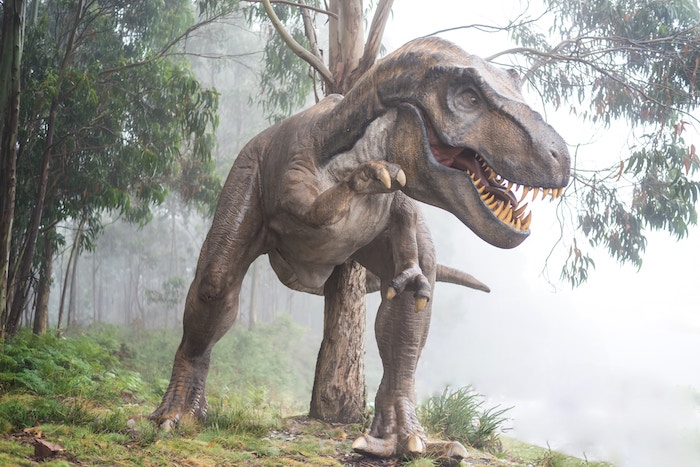
With agree / disagree type essays you can discuss both sides of the issue but you can come down firmly on one side and focus on only this in your response.
This can be an easier way to answer such questions and is certainly recommended if you are just needing the lower band scores, such as 7 and especially 6.
This is an example of an essay where the writer disagrees with the opinion and has given three reasons for this, set out in three body paragraphs.
For the higher band scores there is a risk the examiner thinks for a fully addressed answer , both sides of the issue should have been considered. So if you need a band 8 or 9, look at both sides of the issue as in this model answer.
Take a look at the model answer for this animal extinction essay and the comments below.
Extinction of Animals Essay Sample
You should spend about 40 minutes on this task.
Write about the following topic:
Give reasons for your answer and include any relevant examples from your own experience or knowledge.
Write at least 250 words.
Model Answer
It is commonly known that many species have gone extinct throughout history, including the dinosaurs. Some argue that preventing extinction is not necessary, as it is a natural process. However, I believe that humans have a moral obligation to protect endangered species and prevent their extinction.
Firstly, human activities such as deforestation, overfishing, and pollution have caused a rapid decline in animal populations, leading many species to be at risk of extinction. As a result, humans have a responsibility to conserve the environment and prevent further harm to wildlife. It is unfair for humans to cause the extinction of a species due to their actions, particularly when they have the ability to prevent it.
Another reason is that many species play a crucial role in maintaining the balance of the ecosystem. For example, bees are essential pollinators that are responsible for pollinating 80% of flowering plants, and thus if bees were to become extinct, it would have a devastating impact on our food supply and ecosystem. Similarly, the loss of predators can cause a ripple effect, leading to overpopulation of other species and causing imbalances in the food chain.
Lastly, preventing extinction is not only a matter of responsibility but also a matter of morality. Species have intrinsic value, and it is not our place to determine which species should exist and which should not. Humans must respect the inherent value of all life forms and do what they can to protect them.
In conclusion, while extinction may be a natural process, it is not a justification for humans to sit idly by and watch as countless species go extinct. By taking action to conserve the environment, humans can ensure that future generations can enjoy the same diversity of life that we have today.
(294 Words)
This extinction of animals essay would achieve a high IELTS band score.
It's organised well so would score highly for coherence and cohesion . It has a clear introduction that introduces the topics and then gives the writers opinion (the thesis statement).
Each body paragraph clearly sets out and explains a key idea, then the conclusion summarises the writers view and gives some final thoughts. The linking between sentences is also very good.
It has a clear opinion and that opinion is reflected in the response. The ideas are fully supported and explained. The question is fully addressed and the essay does not go off-topic. It would therefore score highly for task response .
The essay also had a good range of high-level and accurate lexis and grammar , so it would also score well for those criteria.
<<< Back
Next >>>
More Agree / Disagree Essays:

Ban Smoking in Public Places Essay: Should the government ban it?
Ban smoking in public places essay: The sample answer shows you how you can present the opposing argument first, that is not your opinion, and then present your opinion in the following paragraph.

Essay for IELTS: Are some advertising methods unethical?
This is an agree / disagree type question. Your options are: 1. Agree 100% 2. Disagree 100% 3. Partly agree. In the answer below, the writer agrees 100% with the opinion. There is an analysis of the answer.

Scientific Research Essay: Who should be responsible for its funding?
Scientific research essay model answer for Task 2 of the test. For this essay, you need to discuss whether the funding and controlling of scientific research should be the responsibility of the government or private organizations.

Free University Education Essay: Should it be paid for or free?
Free university education Model IELTS essay. Learn how to write high-scoring IELTS essays. The issue of free university education is an essay topic that comes up in the IELTS test. This essay therefore provides you with some of the key arguments about this topic.

Dying Languages Essay: Is a world with fewer languages a good thing?
Dying languages essays have appeared in IELTS on several occasions, an issue related to the spread of globalisation. Check out a sample question and model answer.

Technology Development Essay: Are earlier developments the best?
This technology development essay shows you a complex IELTS essay question that is easily misunderstood. There are tips on how to approach IELTS essay questions

Return of Historical Objects and Artefacts Essay
This essay discusses the topic of returning historical objects and artefacts to their country of origin. It's an agree/disagree type IELTS question.

Human Cloning Essay: Should we be scared of cloning humans?
Human cloning essay - this is on the topic of cloning humans to use their body parts. You are asked if you agree with human cloning to use their body parts, and what reservations (concerns) you have.

Role of Schools Essay: How should schools help children develop?
This role of schools essay for IELTS is an agree disagree type essay where you have to discuss how schools should help children to develop.

IELTS Internet Essay: Is the internet damaging social interaction?
Internet Essay for IELTS on the topic of the Internet and social interaction. Included is a model answer. The IELTS test usually focuses on topical issues. You have to discuss if you think that the Internet is damaging social interaction.

Examinations Essay: Formal Examinations or Continual Assessment?
Examinations Essay: This IELTS model essay deals with the issue of whether it is better to have formal examinations to assess student’s performance or continual assessment during term time such as course work and projects.

Sample IELTS Writing: Is spending on the Arts a waste of money?
Sample IELTS Writing: A common topic in IELTS is whether you think it is a good idea for government money to be spent on the arts. i.e. the visual arts, literary and the performing arts, or whether it should be spent elsewhere, usually on other public services.

IELTS Sample Essay: Is alternative medicine ineffective & dangerous?
IELTS sample essay about alternative and conventional medicine - this shows you how to present a well-balanced argument. When you are asked whether you agree (or disagree), you can look at both sides of the argument if you want.

IELTS Vegetarianism Essay: Should we all be vegetarian to be healthy?
Vegetarianism Essay for IELTS: In this vegetarianism essay, the candidate disagrees with the statement, and is thus arguing that everyone does not need to be a vegetarian.

Employing Older People Essay: Is the modern workplace suitable?
Employing Older People Essay. Examine model essays for IELTS Task 2 to improve your score. This essay tackles the issue of whether it it better for employers to hire younger staff rather than those who are older.

Internet vs Newspaper Essay: Which will be the best source of news?
A recent topic to write about in the IELTS exam was an Internet vs Newspaper Essay. The question was: Although more and more people read news on the internet, newspapers will remain the most important source of news. To what extent do you agree or disagree?

Multinational Organisations and Culture Essay
Multinational Organisations and Culture Essay: Improve you score for IELTS Essay writing by studying model essays. This Essay is about the extent to which working for a multinational organisation help you to understand other cultures.

Airline Tax Essay: Would taxing air travel reduce pollution?
Airline Tax Essay for IELTS. Practice an agree and disagree essay on the topic of taxing airlines to reduce low-cost air traffic. You are asked to decide if you agree or disagree with taxing airlines in order to reduce the problems caused.

Truthfulness in Relationships Essay: How important is it?
This truthfulness in relationships essay for IELTS is an agree / disagree type essay. You need to decide if it's the most important factor.

Paying Taxes Essay: Should people keep all the money they earn?
Paying Taxes Essay: Read model essays to help you improve your IELTS Writing Score for Task 2. In this essay you have to decide whether you agree or disagree with the opinion that everyone should be able to keep their money rather than paying money to the government.
Any comments or questions about this page or about IELTS? Post them here. Your email will not be published or shared.
Would you prefer to share this page with others by linking to it?
- Click on the HTML link code below.
- Copy and paste it, adding a note of your own, into your blog, a Web page, forums, a blog comment, your Facebook account, or anywhere that someone would find this page valuable.
Band 7+ eBooks
"I think these eBooks are FANTASTIC!!! I know that's not academic language, but it's the truth!"
Linda, from Italy, Scored Band 7.5

IELTS Modules:
Other resources:.
- All Lessons
- Band Score Calculator
- Writing Feedback
- Speaking Feedback
- Teacher Resources
- Free Downloads
- Recent Essay Exam Questions
- Books for IELTS Prep
- Useful Links

Recent Articles
IELTS Bundle Writing eBooks: 30% Off
Jun 01, 24 09:55 AM

House Sitting
May 31, 24 03:59 AM
Key Phrases for IELTS Speaking: Fluency and Coherence
May 26, 24 06:52 AM
Important pages
IELTS Writing IELTS Speaking IELTS Listening IELTS Reading All Lessons Vocabulary Academic Task 1 Academic Task 2 Practice Tests
Connect with us
Before you go...
Check out the ielts buddy band 7+ ebooks & courses.

Copyright © 2022- IELTSbuddy All Rights Reserved
IELTS is a registered trademark of University of Cambridge, the British Council, and IDP Education Australia. This site and its owners are not affiliated, approved or endorsed by the University of Cambridge ESOL, the British Council, and IDP Education Australia.
ENCYCLOPEDIC ENTRY
Extinction is the dying out of a species. Extinction plays an important role in the evolution of life because it opens up opportunities for new species to emerge.
Biology, Ecology, Earth Science, Geology, Geography, Conservation
Dinogorgon Skull
A dinogorgon skull protrudes from a rock with the South African scrubland in the background.
Photograph by Jonathan Blair
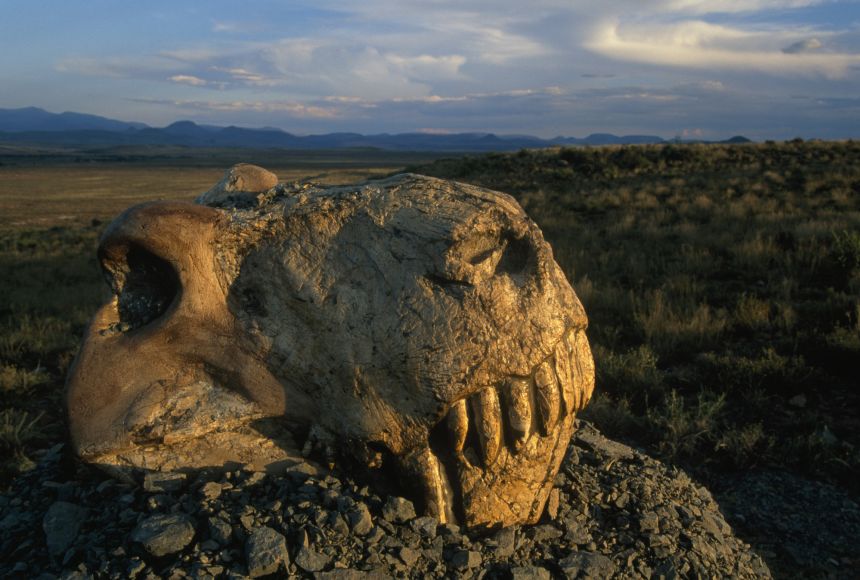
When a species disappears, biologists say that the species has become extinct. By making room for new species, extinction helps drive the evolution of life. Over long periods of time, the number of species becoming extinct can remain fairly constant, meaning that an average number of species go extinct each year, century, or millennium. However, during the history of life on Earth, there have been periods of mass extinction , when large percentages of the planet’s species became extinct in a relatively short amount of time. These extinctions have had widely different causes.
About 541 million years ago, a great expansion occurred in the diversity of multicellular organisms. Paleo biologists , scientists who study the fossils of plants and animals to learn how life evolved, call this event the Cambrian Explosion. Since the Cambrian Explosion, there have been five mass extinctions , each of which is named for the geological period in which it occurred, or for the periods that immediately preceded and followed it.
The first mass extinction is called the Ordovician-Silurian Extinction . It occurred about 440 million years ago, at the end of the period that paleontologists and geologists call the Ordovician, and followed by the start of the Silurian period. In this extinction event, many small organisms of the sea became extinct. The next mass extinction is called Devonian extinction , occurring 365 million years ago during the Devonian period. This extinction also saw the end of numerous sea organisms.
The largest extinction took place around 250 million years ago. Known as the Permian - Triassic extinction, or the Great Dying, this event saw the end of more than 90 percent of Earth’s species. Although life on Earth was nearly wiped out, the Great Dying made room for new organisms, including the first dinosaurs. About 210 million years ago, between the Triassic and Jurassic periods, came another mass extinction. By eliminating many large animals, this extinction event cleared the way for dinosaurs to flourish. Finally, about 65.5 million years ago, at the end of the Cretaceous period came the fifth mass extinction. This is the famous extinction event that brought the age of the dinosaurs to an end.
In each of these cases, the mass extinction created niches or openings in the Earth’s ecosystems. Those niches allowed for new groups of organisms to thrive and diversify, which produced a range of new species. In the case of the Cretaceous extinction , the demise of the dinosaurs allowed mammals to thrive and grow larger.
Scientists refer to the current time as the Anthropocene period, meaning the period of humanity. They warn that, because of human activities such as pollution, overfishing, and the cutting down of forests, the Earth might be on the verge of—or already in—a sixth mass extinction. If that is true, what new life would rise up to fill the niche that we currently occupy?
Media Credits
The audio, illustrations, photos, and videos are credited beneath the media asset, except for promotional images, which generally link to another page that contains the media credit. The Rights Holder for media is the person or group credited.
Production Managers
Program specialists, last updated.
October 19, 2023
User Permissions
For information on user permissions, please read our Terms of Service. If you have questions about how to cite anything on our website in your project or classroom presentation, please contact your teacher. They will best know the preferred format. When you reach out to them, you will need the page title, URL, and the date you accessed the resource.
If a media asset is downloadable, a download button appears in the corner of the media viewer. If no button appears, you cannot download or save the media.
Text on this page is printable and can be used according to our Terms of Service .
Interactives
Any interactives on this page can only be played while you are visiting our website. You cannot download interactives.
Related Resources

Extinct species, explained
Extinctions happen when a species dies out from cataclysmic events, evolutionary problems, or human interference.
The truth is, scientists don’t know how many species of plants, animals, fungi, and bacteria exist on Earth. The most recent estimate put that number at 2 billion , and that will most likely change at some point.
One thing we do know: The western black rhinoceros, the Tasmanian tiger, and the woolly mammoth are among the creatures whose populations at one point dwindled to zero, and it’s possible that species extinction is happening a thousand times more quickly because of humans .
Extinction happens when environmental factors or evolutionary problems cause a species to die out. The disappearance of species from Earth is ongoing, and rates have varied over time. A quarter of mammals is at risk of extinction , according to IUCN Red List estimates.
To some extent, extinction is natural. Changes to habitats and poor reproductive trends are among the factors that can make a species’ death rate higher than its birth rate for long enough that eventually, none are left.
Humans also cause other species to become extinct by hunting, overharvesting, introducing invasive species to the wild, polluting, and changing wetlands and forests to croplands and urban areas. Even the rapid growth of the human population is causing extinction by ruining natural habitats.
Among the most famous species driven to extinction by humans is the dodo , a bird that primarily lived in the island nation of Mauritius and was popularized by its appearance in Lewis Carroll’s book “Alice’s Adventures in Wonderland.” Dodos were first mentioned by Dutch sailors in the late 16th century and last seen in 1662 after having been hunted to extinction. Passenger pigeons, billions of which frequently blanketed North American skies when Europeans arrived on the continent, went extinct when the last one died at the Cincinnati Zoo in 1914.
Six mass extinctions
Fossils show that there have been five previous periods of history when an unusually high number of extinctions occurred in what are known as mass extinctions. Most of the Earth’s species went extinct roughly 266 million to 252 million years ago in the Permian extinction .
Those losses, however, also paved the way for dinosaurs to evolve into existence, as mass extinctions create a chance for new species to emerge. Dinosaurs met their end about 65 million years ago in another mass extinction at the end of the Cretaceous period. A large crater off of Mexico’s Yucatán Peninsula suggests that an asteroid most likely struck there. Scientists believe that volcanic eruptions in India caused global warming that also may have contributed to the mass extinction.
Scientists are debating whether Earth is now in the midst of a sixth mass extinction . If so, it may be the fastest one ever with a rate of 1,000 to 10,000 times the baseline extinction rate of one to five species per year. Humans are largely responsible for the striking trend. Scientists believe that pollution, land clearing, and overfishing might drive half of the planet’s existing land and marine species to extinction by 2100.
Slowly increasing surface temperatures caused by heightened levels of greenhouse gases likely will cause many species to move toward the Earth’s poles and higher up into the mountains to stay in habitats with the same climates. But not all species will be able to adapt quickly enough to stave off extinction and many are expected to perish.
What can we do about it?
Using fewer fossil fuels by lowering the thermostat, driving less frequently, and recycling is one good way to slow the rate of extinctions. Eating less meat and avoiding products, like ivory, that are made from threatened species also can make a difference. At home, securing garbage in locked cans, reducing water usage, and refraining from using herbicides and pesticides can protect local wildlife.
For Hungry Minds
Related topics.
- EXTINCT SPECIES
- EXTINCTION EVENTS
- PALEOZOIC ERA
You May Also Like

Scientists just dug up a new dinosaur—with tinier arms than a T.Rex

There are two northern white rhinos left on Earth. Can a controversial approach save them?

How an ‘extinct’ cicada was rediscovered 100 years later

These 5 lesser-known species may vanish. If they do, we’re all in trouble.

Efforts to resurrect the extinct Tasmanian tiger get a boost
- Environment
- Paid Content
- Photography
- Perpetual Planet

History & Culture
- History & Culture
- History Magazine
- Mind, Body, Wonder
- Terms of Use
- Privacy Policy
- Your US State Privacy Rights
- Children's Online Privacy Policy
- Interest-Based Ads
- About Nielsen Measurement
- Do Not Sell or Share My Personal Information
- Nat Geo Home
- Attend a Live Event
- Book a Trip
- Inspire Your Kids
- Shop Nat Geo
- Visit the D.C. Museum
- Learn About Our Impact
- Support Our Mission
- Advertise With Us
- Customer Service
- Renew Subscription
- Manage Your Subscription
- Work at Nat Geo
- Sign Up for Our Newsletters
- Contribute to Protect the Planet
Copyright © 1996-2015 National Geographic Society Copyright © 2015-2024 National Geographic Partners, LLC. All rights reserved
News from the Columbia Climate School
Why Endangered Species Matter

The Endangered Species Act (ESA) was established in 1973 to protect “imperiled species and the ecosystems upon which they depend” and help them recover.
The Trump administration has put forth a number of proposals that would weaken the ESA. These include measures to allow for the consideration of economic impacts when enforcing the ESA, ending the practice of automatically giving threatened species the same protection as endangered species, and making it easier to remove species from the endangered list.
In a way, this is nothing new because the ESA has been under attack for decades from construction, development, logging, water management, fossil fuel extraction and other industries that contend the act stifles economic development. But between 2016 and 2018 alone, there were almost 150 attempts to undercut the ESA; and last year, from July 8 to 22, Republicans in Congress or the Trump administration introduced 24 such measures and spending bill riders.

These bills included efforts to remove the gray wolf’s protected status in Wyoming and the western Great Lakes; a plan to remove from the endangered list the American burying beetle that lives on oil-rich land; and a strategy to roll back protection of the sage-grouse, which also inhabits oil-rich land in the West and whose numbers have declined 90 percent since the West was first settled. The Trump Administration recently opened up nine million acres of sage-grouse habitat to drilling and mining.
Endangered species, if not protected, could eventually become extinct—and extinction has a myriad of implications for our food, water, environment and even health.
Extinction rates are accelerating
Ninety-nine percent of all species that have ever lived have gone extinct over the course of five mass extinctions, which, in the past, were largely a result of natural causes such as volcano eruptions and asteroid impacts. Today, the rate of extinction is occurring 1,000 to 10,000 times faster because of human activity. The main modern causes of extinction are the loss and degradation of habitat (mainly deforestation), over exploitation (hunting, overfishing), invasive species, climate change, and nitrogen pollution.
There are also other threats to species such as the pervasive plastic pollution in the ocean—a recent study found that 100 percent of sea turtles had plastic or microplastic in their systems.

Emerging diseases affecting more and more wildlife species such as bats, frogs and salamanders are the result of an increase in travel and trade, which allows pests and pathogens to hitch rides to new locations, and warming temperatures that enable more pests to survive and spread. Wildlife trafficking also continues to be a big problem because for some species, the fewer members there are, the more valuable they become to poachers and hunters.
How many species are endangered?
According to the International Union for Conservation of Nature’s Red List of Threatened Species , over 26,500 species are in danger of extinction. This includes 40 percent of amphibians, 34 percent of conifers, 33 percent of reef-building corals , 25 percent of mammals and 14 percent of birds. In the U.S., over 1,600 species are listed as threatened or endangered.
A 2018 report by the Endangered Species Coalition found that ten species in particular are “imperiled” by the Trump administration’s proposals: California condor, giraffe, Hellbender salamander, Humboldt marten, leatherback and loggerhead sea turtles, red wolf, rusty patched bumble bee,

San Bernardino kangaroo rat, West Indian manatee, and Western yellow-billed cuckoo.
The web of life
While it may seem unimportant if we lose one salamander or rat species, it matters because all species are connected through their interactions in a web of life. A balanced and biodiverse ecosystem is one in which each species plays an important role and relies on the services provided by other species to survive. Healthy ecosystems are more productive and resistant to disruptions.
A recent study found that extreme environmental change could trigger an “extinction domino effect.” One of the study’s authors said, “Because all species are connected in the web of life, our paper demonstrates that even the most tolerant species ultimately succumb to extinction when the less-tolerant species on which they depend disappear.” So saving one species means saving its habitat and the other species that live there too.
“When you lose one species, it affects the ecosystem and everything around it gets a little bit more fragile while it adapts to change,” said Kelsey Wooddell , assistant director of the Earth Institute Center for Environmental Sustainability. “Even if it’s not a keystone species [a species that others in an ecosystem depend on], its loss will weaken the functionality of the entire ecosystem, which just makes it easier for that ecosystem to stop working.”
What are the consequences of extinction?
Altering ecosystems through cascading effects
If a species has a unique function in its ecosystem, its loss can prompt cascading effects through the food chain (a “trophic cascade”), impacting other species and the ecosystem itself.
An often-cited example is the impact of the wolves in Yellowstone Park, which were hunted to near extinction by 1930. Without them, the elk and deer they had preyed upon thrived, and their grazing decimated streamside willows and aspens, which had provided habitat for songbirds. This left the stream banks susceptible to erosion, and a decline in songbirds allowed mosquitoes and other insects the birds would have eaten to multiply. When the wolves were reintroduced to the park in 1995, they once again preyed on the elk; plant life returned to the stream banks and along with it, birds, beavers, fish and other animals. (Note: David Bernhardt, acting secretary of the Department of the Interior, just announced a proposal to strip gray wolves of their endangered status in the Lower 48 states.)
Kelp forests are another classic example. They play an important role in coastal ecosystems because they provide habitat for other species, protect the coastline from storm surges and absorb carbon dioxide.

Yet kelp forests are rapidly getting mowed down by exploding numbers of purple sea urchin. California sea otters eat the purple sea urchins that feed on giant kelp. These otters used to number in the hundreds of thousands to millions, but their population has been reduced to about 3,000 as a result of unchecked hunting in the 19th century and pollution. Moreover, in 2013 the sunflower starfish, which also eats purple sea urchins, began dying because of a virus that was likely exacerbated by warmer waters. Without the sea otter and the sunflower starfish predators, the purple sea urchin began feasting on the kelp forests, which declined 93 percent between 2013 and 2018. (A new study found that kelp forests are now also threatened by ocean heat waves.) The explosion of sea urchins not only damaged the kelp ecosystem, it also had serious impacts on Northern California’s red urchins that are valued for sushi. Fish that need the kelp forests for spawning, such as sculpin, rock cod and red snapper may become vulnerable in the future as well.
As another example, Wooddell explained that on Guam, after the invasive brown tree snake was accidentally introduced to the island in the 1950s, 10 of the island’s 12 endemic bird species went extinct. “Typically birds eat seeds and spread seeds elsewhere on the island but that is no longer a functioning ecosystem,” she said. “So the forest and the trees have decreased a lot. And Guam is covered in spiders because the birds are not there to eat them.”
Losing apex species has multiple effects
Eliminating the large predators at the top of the food chain, the “apex species,” may be humans’ most serious impact on nature, according to one study . These large species are more vulnerable because they live longer, reproduce more slowly, have small populations, and need more food and a greater habitat area. Scientists say their loss has played a role in pandemics, fires, the decline of valued species and the rise of invasive ones, the reduction of ecosystem services, and decreased carbon sequestration.
Elephants are an apex species that may go extinct in our lifetime, as a result of tourism, habitat loss and poaching for ivory. This could dramatically change ecosystems in Africa and Asia. Through consumption and digestion, elephants disperse more seeds farther than any other animals; this fosters the growth of plants and trees that birds, bats and other animals depend upon for food and shelter.

Elephants also dig water holes that all animals share, and they fertilize the soil with their rich dung, which provides food for other animals.
The loss of apex species can also affect wildfires. After rinderpest, an infectious virus, wiped out many plant-eating wildebeest and buffalo in East Africa in the late 1800s, plants flourished. During the dry season, this over-abundance of vegetation spurred an increase in wildfires. In the 1960s, after rinderpest was eliminated through vaccinations, the wildebeest and buffalo returned. The ecosystem went from shrubbery to grasslands again, decreasing the amount of combustible vegetation, and the wildfires decreased.
Jeopardizing pollination
Seventy-five percent of the world’s food crops are partially or completely pollinated by insects and other animals, and practically all flowering plants in the tropical rainforest are pollinated by animals. The loss of pollinators could result in a decrease in seed and fruit production, leading ultimately to the extinction of many important plants.
Flying foxes, also known as fruit bats, are the only pollinators of some rainforest plants. They have been over-hunted in tropical forests with several species going extinct. One study noted that 289 plant species, including eucalyptus and agave, rely on flying foxes to reproduce; in turn, these plants were responsible for producing 448 valuable products.
Bees pollinate over 250,000 species of plants, including most of the 87 crops that humans rely on for food, such as almonds, apples and cucumbers.

But in recent years, large populations of bees have been wiped out by the mysterious “colony collapse disorder” wherein adult honeybees disappear from their hive, likely in response to numerous stressors.
Over the last 20 years in the U.S., monarch butterflies, which pollinate many wildflowers, have decreased 90 percent. The rusty-patched bumble bee, another important pollinator and the first bee species to be put on the endangered list, now only occupies one percent of its former range.
Insect populations overall are declining due to climate change, habitat degradation, herbicides and pesticides. A 2014 review of insect studies found that most monitored species had decreased by about 45 percent. And a German study found 75 percent fewer flying insects after just 27 years. As insect populations are reduced, the small animals, fish and birds that rely on them for food are being affected, and eventually the predators of fish and birds will feel the impacts as well. One entomologist who had studied insects in the rainforest in the 1970s returned in 2010 to find an up to 60-fold reduction. His study reported “a bottom-up trophic cascade and consequent collapse of the forest food web.”
Endangering the food chain
Plankton, tiny plant and animal organisms that live in the ocean or fresh water, make up the foundation of the marine food chain. Phytoplankton are critical to the health of oceans and the planet because they consume carbon dioxide and produce oxygen during photosynthesis.

In 2010, researchers found that phytoplankton had decreased 40 percent globally since 1950, and attributed the decline to rising sea surface temperatures. The scientists speculated that the warming surface waters did not mix well with the cooler, deeper waters rich in nutrients that phytoplankton need. In addition, zooplankton are very sensitive to slight changes in the amount of oxygen in the ocean, and may be unable to adapt as areas of low oxygen expand due to climate change.
The quantity and quality of plankton also affects the nutrition of other creatures further up the food chain. In the Mediterranean Sea, the biomass of sardines and anchovies declined by one-third in just ten years. One scientist speculated that this is because the sardines’ and anchovies’ normal plankton had disappeared, so they had to resort to eating a less nutritious species of plankton with fewer calories. Changes in plankton quality could be a result of water temperature, pollution or lack of nutrients, but scientists are not exactly sure why the plankton makeup in some places is changing. If it is due to global warming and pollution, some say the situation could worsen.
However, Sonya Dyhrman, a professor in Columbia University’s Department of Earth and Environmental Sciences who studies phytoplankton with the Lamont-Doherty Earth Observatory, is more sanguine about the future. “Microbes like phytoplankton can adapt, can acclimate, and can evolve, so I worry less about lineages of phytoplankton going extinct and more about how phytoplankton community composition will change in the future ocean,” said Dyhrman.
A different community composition of phytoplankton could change the food web structure, but Dyhrman is not really worried about the total collapse of fisheries. She is concerned, however, that “there could be changes in ocean ecosystems and we don’t really know what those changes will be. What will the architecture of that ecosystem look like in the future? The problem is, the ocean is already changing and we don’t understand the architecture of the ecosystem right now well enough to predict what will happen in the future.“
Losing nature’s therapeutic riches
More than a quarter of prescription medications contain chemicals that were discovered through plants or animals. Penicillin was derived from a fungus. Scientists are studying the venom of some tarantulas to see if one of its compounds could help cure diseases such as Parkinson’s. One molecule from a rare marine bacterium could be the basis of a new way to treat to melanoma.
Scientists have so far identified about 1.7 million different types of organisms, but between 10 and 50 million species are thought to exist on Earth.

Who knows what substances or capabilities some of these species might possess that could help treat diseases and make human lives easier?
Destroying livelihoods
According to a study for the U.N., the continued loss of species could cost the world 18 percent of global economic output by 2050.
Already, a number of industries have been economically impacted by species loss. The collapse of bee populations has hurt many in the $50 billion-a-year global honey industry. Atlantic cod in the waters off of Newfoundland formed the basis of the local economy since the 15 th century — until overfishing the cod destroyed the livelihoods of local fishermen.
What you can do about extinction
Extinction is hard to see. We may not realize how much of the natural world has been lost because the “baseline” shifts with every generation. Past generations would regard what we see as natural today as terribly damaged, and what we see as damaged today, our children will view as natural.
Wooddell believes the most important thing one can do is to put pressure on Congress and elected leaders to create land management, pollution and other sustainable policies that will protect biodiversity and the environment. However, because it’s unlikely that these kinds of top-down policies will be instituted in the current political climate, she recommends mobilizing grassroots community groups to create “bottom-up” policies.
Here are some other things you can do to protect endangered species and prevent extinction:
- Eat less meat. Soybean production is one of the main causes of deforestation, and most soybean meal is used for animal feed.
- Buy organic food because organic farmers use only non-synthetic or natural pesticides on their crops. Synthetic pesticides may be toxic for other organisms.
- Choose sustainable seafood. The Marine Stewardship Council provides a list of certified sustainable fish for responsible eating.
- Compost food waste . In New York City, the compost is used for urban farming and gardening, which provide habitat for pollinators.
- Buy wood and paper products certified by the Forest Stewardship Council , to ensure they’re harvested from responsibly managed forests.

- Don’t buy products made from endangered or threatened species, such as tortoise shell, ivory, coral, some animal skins, and “traditional” medicines.
- Be aware of the source of palm oil used in countless food and cosmetic products. Many tropical forests are being razed for palm oil plantations. If a product contains palm oil, make sure it’s from a deforestation-free plantation .
- Reduce your use of plastic .
- If you have a garden, plant native shrubs and flowers that attract butterflies and other pollinators. Milkweed is particularly helpful for monarch butterflies.
- Set up a beehive.
- Diversify your diet. Eating these 50 foods will promote biodiversity and a healthier plant.
- Support and get involved with organizations that are helping endangered animals.
- Join the Center for Biological Diversity and use their Take-Action Toolboxes.
Correction: This post was updated on April 3, 2019 to remove a sentence about cownose rays devastating scallop populations off of North Carolina. It turns out that other studies have challenged those findings.
Related Posts

Grin and Bear It? Reintroducing Grizzlies to the North Cascades Provokes Strong Emotions

The Impact of the 15th Biodiversity Conference of Parties (COP 15)

What Tracking Mountain Lions Taught Me About Adaptability

Recent record-breaking heat waves have affected communities across the world. The Extreme Heat Workshop will bring together researchers and practitioners to advance the state of knowledge, identify community needs, and develop a framework for evaluating risks with a focus on climate justice. Register by June 15
A new UN report ( https://www.nytimes.com/2019/05/06/climate/biodiversity-extinction-united-nations.html ) finds that one million species are at risk of extinction; this is threatening ecosystems around the world that human beings need to survive.
The Trump administration has put forth new rules that will significantly weaken the Endangered Species Act. https://www.nytimes.com/2019/08/12/climate/endangered-species-act-changes.html?module=inline
Wouldn’t there be an evolutionary development that occurs when one species is gone? What happened when something like the Dodo went extinct? Did other creatures in its ecosystems adapt to perform the Dodo’s services? When I think about extinction, I always wonder what would have happened if the dinosaurs had not become extinct.
I am late to the discussion about keystone species but since I have learned about the roles of these key animals to specific environments around the world I have tried and failed to see homo sapiens as a keystone species but rather I see us more like the ungulates, which when left unchecked by a corresponding predator, such as the wolf in the Yellow Stone Park scenario, would decimate any environment we occupy. We are overpopulating, over consuming, over producing items that are harmful to the entire world (such as plastics) and what will keep us in check? Who will be our wolves? Cancer? Illnesses? Violence? If humans disappeared from the earth, just suddenly vanished, I think the earth and all her flora and fauna would recover quickly. Our intelligence should curb our avarice, but I fear we are too shortsighted and too quick to rationalize away the science which spells out the looming disaster brought on my our ignorance and greed.
Dear Deborah, Your analysis is very disturbing; and unfortunately, true. Nice post, keep it up.
well said. I think this is spot on and with the human species looking to colonize Mars and the Moon…what more damage will we do?
Endangered species are important. In my opinion, their absence can cause a break in the food chain or break synergies with other species, and thus a negative impact on them. One species and can change so much. Like a domino effect. We should take care of every species.
I have been searching for a reasonable explanation of preservation of endangered species, and the search continues still. Apart from few redundant examples like bees or birds/animals taking part in pollinating processes or overgrowth/extinction, I can’t see any direct explanation on the outcomes of the extinctions of any species, viz. Tigers, Elephants, Rhinos, Deers etc. on the ecosystems or direct influence on humankind. Whereas, deforestation, excessive usage of fossil fuels, phytoplankton extinctions leading to global warming effects are easily understood, no such wide range of explanations and outcomes do exist on the extinction of species and their wide range of influences. Still looking for a reasonable explanation….
can effect the food chain and thus effect humans less tigers mean more prey and then they will take up resources and could become extinct and so on
I love animals!
same, i hope we can work together to stop some animals from going extinct.
Endangered Animals Matter Because If They Disappear, It Could Destroy Entire Ecosystems, STEA ( Save The Endangered Animals )
Yes, absolutely!
the thought of someone killing a poor turtle to make a stupid mirror just makes me want to cry! how could people be so cruel!?!?!?
That’s the sad world we live in.
I LOVE ANIMALS WE LOVE ANIMALS.HELP ANIMALS!
That is a wild amount of money that bees are responsible for pollinating crops.
I can’t believe that how many animals have gone extinct
I know right, it is so sad
I agree, without animals there would be no cures for horrible and possibly deadly diseases. Who knew that most of our endangered species helped with cures.
Why do they endanger species this makes me mad
We should save them, not hunt them. I hate the trump administration
I agree entirely.
I wish all animals would live without the fear of extinction.
I wish there was a way we could stop the cause of extinction and make a way to where more people would actually care.
How do i cite this?
how do i cite this
This is so wonderful. It has lots of info. I absolutely love this site!
This is such a great article with a great display of information!
yo i think we should get alot of people to explore the water and to save animals to pick up trash too.
bruh can they delete the trash out of the ocean using robots or elon musk can do somthing
At this point I don’t think anyone can take on a task that big
I don’t want any more animals to go extinct
Hi there! I just read the article on https://news.climate.columbia.edu/2019/03/26/endangered-species-matter and I found it informative. I appreciate how the author broke down complex ideas in a way that was easy to understand. It’s great to see content that is both engaging and educational. Thanks for sharing this resource!
Good resource, and lots of imformation
I went to Alley Springs and saw the scenery and now I run a business where I sell eco-friendly things and do manual labor to help trees. All the money is put to help forests and animals. -Evalyn Demery
Thats a good idea!
I think an easier way to clean out our ocean is to just volunteer and stop having robots or people that act like they do but don’t really care doing it
Great Article!!
HELP ANIMALS
Get the Columbia Climate School Newsletter
The Animal Extinction Crisis: Causes, Effects & Solutions
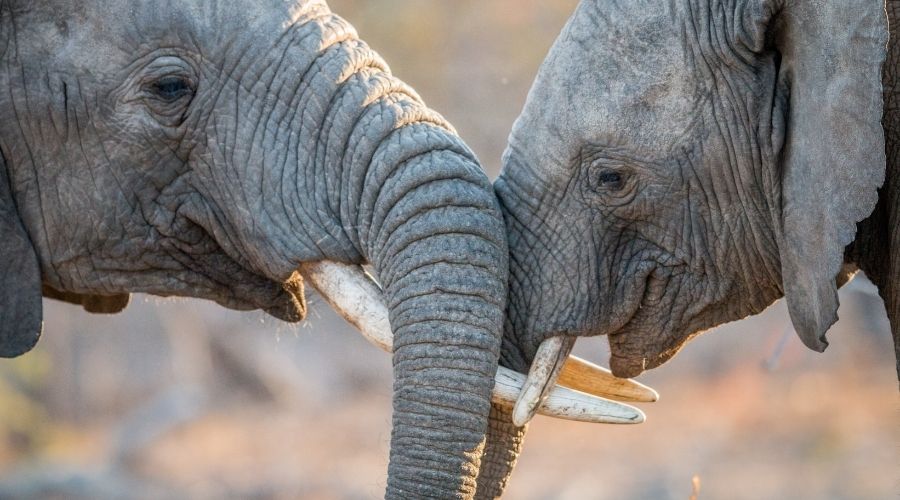
Extinction is a natural process that has been occurring for as long as there’s been life on earth. 99% of all organisms that have ever existed have gone extinct.
However, ongoing animal extinction is no longer a natural occurrence. It’s now a significant problem. This is because the current rate of extinction is higher than ever, and it’s changing the world as we know it. We’re losing many species every year, and many more are on the verge of extinction. If we don’t do something, there will be irreversible damage to ecosystems.
So what causes extinction, and what can we do to slow it down? Let’s discuss.
What Is Animal Extinction and Why Is It a Problem?
Animal extinction is the extermination of animal species. Extinction is essential as it allows a new species to emerge. Extinction typically occurs at a rate of one to two species a year. The current rate of extinction is between 1000 to 10000 times that rate.
Mass extinctions are not new. They have occurred in the past due to volcanoes and asteroids. Humans are currently the most significant cause of this mass extinction of species on earth.
There are an estimated 5 million species on earth currently. According to the International Union for Conservation of Nature (IUCN) , over 26,500 species are on the verge of extinction. The IUCN has accessed only 106,000 species out of 1.5 million animal species. The actual number of species facing death is likely much higher. According to a recent report, an estimated 1 million animal and plant species face extinction. Some species like the Sumatran rhino have a population of less than a hundred.
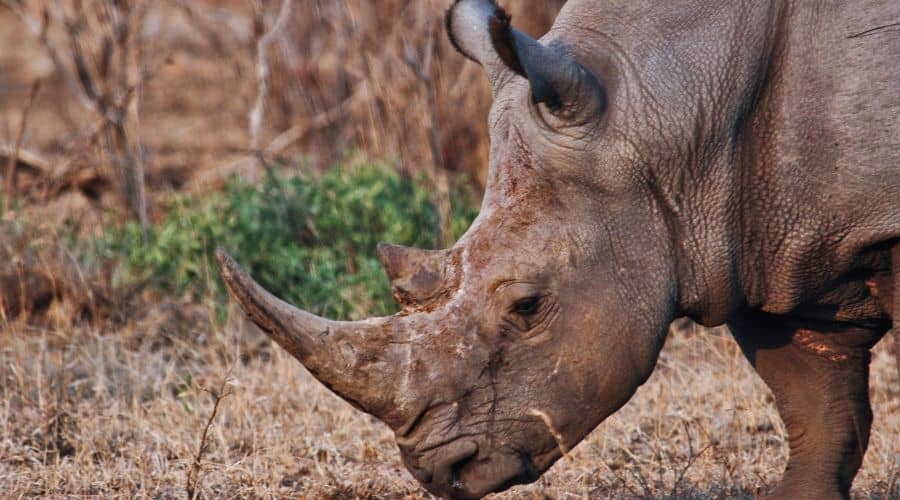
So why is extinction bad? Why should it matter if some species go extinct? All species on earth are connected. A healthy ecosystem is one where each species plays a role and relies on each other to survive. From pollinating plants to forests absorbing carbon dioxide, we rely on biodiversity. In other words, without animals, our existence becomes very difficult.
Besides, this world does not belong to us humans only. We share it with other living beings. They have as much right to live and thrive as we do in their natural habitats.
Major Causes of Animal Extinction
Here are some causes of extinction.
Human activities
Human activities lead to the loss of habitats. Without habitats, animals cannot survive, leading to extinction. As the human population grows, we continue to take up more and more land for development. The land is used for housing, agriculture, and mining. Animals are then forced out of their natural habitats. These activities also deplete the resources in these natural habitats, and the animals starve.
Read more: Why is Deforestation Bad?
Even when habitats aren’t destroyed, they become too different for animals to adapt to. Land ends up becoming fragmented.
Pollution has also made the environment toxic for animals, whether in the air, water, or the land itself. Large numbers of animals are also hunted with little regulation and often illegally.
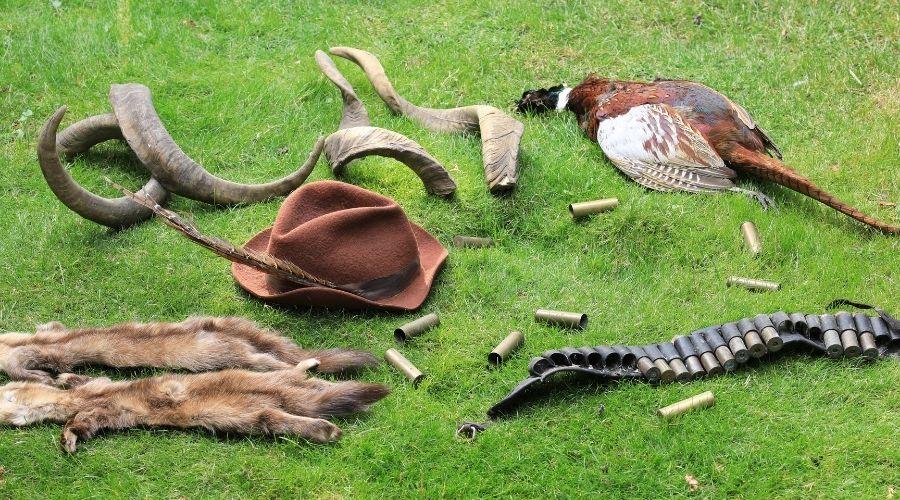
Climate Change
Our planet is becoming warm faster than in the past 10,000 years. There are new climate patterns that animal species have to adapt to or go extinct.
Rising temperatures are causing thousands of wildfires every year. Polar ice caps are melting , and animals that live in the polar regions, such as polar bears, are going extinct.
Ocean acidification is causing the population of important species to decline. Extreme weather events such as droughts and floods are now occurring frequently. Droughts and floods destroy natural habitats and sources of food and water.
Climate change currently affects at least 10,967 species on the IUCN Red List of Threatened Species . Global warming is projected to cause the extinction of over a third of the earth’s species by 2050.
Read more: Animal Extinction Facts
Invasive species
The introduction of invasive species into habitats has altered ecosystems. These species are taken from their natural habitats and brought into new habitats. Invasive species have high rates of reproduction, and they become overpopulated. Invasive species in new habitats might not have natural predators. This allows them to spread fast.
Native species become displaced and have to compete with the invasive species for food. Native species are even hunted to extinction by invasive species. For example, cats are an invasive species that have driven 33 bird species to extinction. In the US alone, cats kill 1 billion birds a year. Approximately 42% of all endangered species are at risk because of invasive species .
Effects of Animal Extinction
There are many adverse effects of animal extinction. Here are some of the significant effects.
Altering ecosystems
The extinction of a species impacts the ecosystem by distorting the food chain. For example, wolves were driven to near extinction in Yellowstone Park because the elk and deer they preyed on decimated plant life on the stream’s banks, causing a decline in songbirds. Mosquitoes and other insects that the songbirds preyed on began multiplying. When the wolves were reinstated, plant life returned to the stream banks, and so did the songbirds.
Eliminating apex species has the highest impact on nature. Wildfires increase when the population of large herbivores declines. There is an increase in invasive species when there are no large predators to hunt them. The extinction of apex species has caused a reduction of ecosystem services such as the provision of food and water.
Endangering the food chain
Insects and animals partly or completely pollinate 75% of all the crops. Animals pollinate all the flowering plants in tropical rainforests. Pollinators such as bees, fruit bats, and monarch butterflies are endangered. Without pollinators, there will be fewer seeds and thus fewer plants. The diet we rely on will change since most of our fruits need pollinators. Many animals that depend on plants pollinated by animals would go extinct as well.
Animals contribute to medicine. More than a quarter of medications contain ingredients found in plants or animals. The invention of new cures depends on what discoveries we can make. When animals go extinct, we might lose essential discoveries, hampering our chances of finding new treatments for diseases affecting animals and humans.
Solutions to Animal Extinction: How Can We Fix It?
Is there a reprieve to animal extinction? Yes, there is!
Here are some solutions to endangered species.
At an Individual Level
Consume responsibly.
Overconsumption is a primary reason for the depletion of resources that is, in part, causing animal extinction. Thoughtful consumption can reduce your ecological footprint. Practice buying just what you need and buying zero-waste products .
Choosing renewable energy
Fossil fuels are one of the primary causes of environmental degradation and pollution. Renewable energy such as solar power reduces your carbon footprint. Turning to renewable energy turns people and governments away from fossil fuels.
Reduce waste and pollution
To reduce waste and pollution:
- Use biodegradable products.
- Buy products made from recycled material.
- Reuse plastic so that you don’t have to get more.
Eat less meat
Meat production is one of the most significant causes of deforestation globally. Eating less meat leads to fewer trees cut down to make room for rearing livestock.
Society & Government Level
Laws and regulations.
Governments need to pass laws that prevent the trading and poaching of endangered species.
Protected status
Governments can also give special status to animals that are not yet critically endangered. This prevents them from being hunted or displaced.
Raising awareness
Many people don’t know about animal extinction as they’re separated from wildlife. Raising awareness would help members of society do their part to help.
Animal extinction is still ongoing. It is a tragedy that we need to stop now before it’s too late. While the situation might seem too dire, there are solutions we can implement. Living an eco-friendly life goes a long way in helping this problem.
More content from the Eco Friendly Habits team:
- 18 Alarming Statistics About Animal Extinction
- What Is Climate Change? Causes, Effects and Solutions
- What Is Animal Testing?

Stella is a writer and mother from Thika, Kenya.
Her love for nature and the beautiful Kenyan outdoors has inspired Stella to consciously make an effort to lead a more sustainable, eco-friendly lifestyle.

Popular Posts
How To Save Water in the Home
Green Cleaning: The Ultimate Guide
Zero Waste Living Guide
Ethical & Sustainable Clothing Guide
105 Ways To Be More Eco Friendly
96 Extinction Essay Topics & Examples
Looking for extinction essay topics? One of the most severe ecological problems is worth exploring.
🏆 A+ Extinction Essay Examples
📌 best extinction essay topics, 🔝 top ideas for an essay about extinction, 👍 endangered species essay topics & title ideas, ❓ research questions about extinction.
Extinction is the termination of a certain living form, usually a species, or a language. The death of the last individual of the species (or the last speaker) is considered to be the moment of extinction. This phenomenon of animal extinction s considered to be the world’s largest threat to wildlife. In the last 50 years, the wildlife population sizes have dropped by 60%. That’s why animal extinction is one of the major ecological issues.
Whether you need to write a research paper or an argumentative essay on extinction, this article will be helpful. It contains top endangered species essay topics, titles, extinction essay examples, etc. Write an A+ essay about extinction with us!
- Preventing Animal Extinction in the UAE In essence, the UAE has been at the forefront of protecting endangered species from extinction and promoting an increment in their population, by putting up breeding programmes which help in multiplication of such animals.
- Dodo Bird and Why It Went Extinct One of the extinct species of bird is the dodo bird. Its extinction has made it hard for scholars to classify the bird when it comes to taxonomy of birds.
- Their Benefits Aside, Human Diets Are Polluting the Environment and Sending Animals to Extinction The fact that the environment and the entire ecosystem have been left unstable in the recent times is in no doubt.
- Wildlife Management and Extinction Prevention in Australia This paper investigates the threats to wildlife in Australia and strategies for managing and preventing their extinction. In summary, this paper examines the threats to wildlife in Australia and outlines strategies for managing and preventing […]
- Human Evolution and Animal Extinction The recent scholarly findings prove that invasions of Homo sapiens to the Austronesian and American continents were the major factors that conditioned the extinction of numerous animal species.
- Premature Extinction of Species For thousands of years of geological time, the extinction of some species has been balanced by the emergence of the new ones.
- Animal Extinction and What Is Being Done To Help The affected species, the causes of the change, as well as the possible criterion of arresting the situation, forms the subject of their discussion.
- “Extinction Rebellion” News Article by Eells The Extinction Rebellion movement was created in 2018, and, according to the organizers, now it has spread to dozens of countries where there are groups ready to participate in protests.
- Diversity and Extinction of Cyclura Lewisi One of the biggest risks to the population of this species is wild animals. The Grand Cayman blue iguana population is gradually expanding and is predicted to continue to rise as a result of continuing […]
- Extinction of Dinosaurs in North America and Texas It is necessary to identify the reason for the extinction of dinosaurs on the territory of the continent, namely, the state of Texas.
- Seabird Extinction from Invasive Rodent Species This paper will review seabirds’ role in ecosystems, the invasive rodent species and their impact on seabirds, and methods of protecting seabirds from non-native rodents.
- Animal Extinction: Causes and Effects Due to the increased rates of globalization and the rapid development of industries, the effect that the humankind has been producing on the environment has been amplified.
- Mathematical Biology: Explaining Population Extinction Species in settings with soft carrying capacities such as those with non-negative value K create a restricted expectation of a variation, given a full past history, is non-positive when the species surpasses the carrying volume.
- The Importance of Saving a Species From Extinction It leads to a lack of surviving members of some species to reproduce in order create a new generation of the extinct species.
- Language Extinction in East Africa Most of the languages in the world fall under the endangered languages category with UNESCO approximating the percentage of endangered languages to be around 60%-80%.
- Extinction of Music Education Plato quoted: “The decisive importance of education in poetry and music: rhythm and harmony sink deep into the recesses of the soul and take the strongest hold there.
- The Cause of Human Extinction: Nature’s Ferocity or People’s Irresponsibility? The following sections will provide statistical data and projections as well as non-scientific scenarios for the end of the world and the extinction of the human race.
- Is Cannibalism the Reason for Neanderthal’s Extinction? They also found that cuts and fractures on the deer bones that were very similar to the ones that were found in the Neanderthal body.
- Chinese Dialects and Extinction Threats The problem of the reduction and extinction of the local dialects is one of the most sensitive and unresolved issues in China.
- Mass Extinction Theories It can thus be speculated that the species that could not withstand the effects of global warming had to become extinct due to the adverse changes in climate.
- Saving Sharks from the Extinction Thus, it is significant for the marshals to guard and secure the naval areas to uncover the abuse and intervene to discontinue the vicious killing of sharks.
- Comparison of Two Archaeological Papers on the Extinction of Animals Due to the Activities of Human Societies. In this study, the varying trends on the abundance of certain species were used to describe changes observed in the hunting practices and the animal species that were hunted.
- Human Activities and their Impact on Species Extinction in Arctic Unfortunately, what should be taken into consideration is the fact that as human interference continues to escalate within the region such as overfishing, oil drilling, population expansion and the effects of global warming this has […]
- Hazard from Space: Mass Extinction Theory The massive impact of extraterrestrial objects did not cause mass extinction of dinosaurs. Dinosaur basis of mass extinction theory do not give plausible explanation for extraterrestrial bodies since they occurred only once during the period […]
- Extinction of minority languages On the other hand, the extinction of minor languages leads to the extinction of certain cultural groups and their individualities, turning the world into a global grey crowd.
- Population Explosion and the Possible Extinction of Humans
- The Continuous Pollution on Earth Post Human Extinction in The World Without Us, a Book by Alan Weisman
- The Endangerment And Mass Extinction of The Tiger: Can We Stop It
- The Wildlife Biodiversity and its Continuous Extinction
- The Permo-Triassic Mass Extinction And The Earth’s Triassic Period
- Mass Extinction of Biodiversity From The Enhanced Greenhouse Effect
- Profit Maximization and the Extinction of Animal Species
- What Are the Consequences of the Removal/Extinction of an Organism from the Food Web
- The Biological Description of the Dodo and Its Extinction
- The Circumstances that Led to the Extinction of Dinosaurs
- We Must Save The Great White Shark From Extinction
- Problem of the Extinction of Many Rare Species
- The Destruction of Natural Habitats and the Extinction of Plants and Animals
- Why Extinction Does Happen It Is Not Indefinite
- Cascades of Failure and Extinction in Evolving Complex Systems
- The Permian Triassic Extinction Event And It’s Effects On Life On Earth
- Upper Estimates of the Mean Extinction Time of a Population with a Constant Carrying Capacity
- What Could Have Caused The Extinction of Dinosaurs
- The Role of Fungus in the Extinction of Dinosaurs
- Saving the Whales: Lessons from the Extinction of the Eastern Arctic Bowhead
- The Extinction, Endangerment, And Captivity of Endangered
- The Effects of Language Extinction on Cultural Identity in Third World Countries
- Sex, Drugs, Disasters, and the Extinction of Dinosaurs by Stephen Jay Gould
- The Ghost of Extinction: Preservation Values and Minimum Viable Population in Wildlife Models
- Recovery After Mass Extinction: Evolutionary Assembly in Large-Scale Biosphere Dynamics
- The Devonian Extinction and the Long Process of Evolution in the Past 300 Million Years
- The Process of De-Extinction And Its Ecological And Moral Consequences
- The Need to Save the Animals from Extinction Using Genetic Engineering
- The Brink Of The Extinction Of America’s Civility And Inclusion
- The Current Extinction Rate Throughout The World: We Must Act Now
- Conservation Biology: Extinction, Habitat Loss, Invasive Species, Overexploitation
- Why Evolution And Extinction Is Essential To Humanity
- The Guam Rail Should Be Saved from Possible Extinction Essay
- The Extinction Event and Life in the Post-Apocalyptic Greenhouse
- Causes of Animal and Plant Extinction, and Its Effects on Humans
- Ultimate Extinction of the Promiscuous Bisexual Galton-Watson Metapopulation
- Saving the Cheetahs of the Serengeti from Extinction
- The Influx of New Languages and Its Dangers to the Extinction of the English Language
- The First Great Whale Extinction: The End of the Bowhead Whale in the Eastern Arctic
- Causes of Canine Extinction and Disappearing Species
- The Themes of Isolation, Extinction and Man’s Limitations in the Poetry of Robert Frost
- The Viability of the Catastrophism Theory in Dinosaur Extinction
- Why The Asian Small-Clawed Otter Is At The Brink Of Extinction
- Species Extinction To Environmental Deterioration
- The Extinction Of Neanderthals And Early Modern Humans
- Did Humans Cause the Mass Extinction of Megafauna During the Late Pleistocene?
- What Are the Consequences of the Extinction of an Organism for the Food Web?
- What Do We Mean by Extinction?
- What Was the Worst Extinction in History?
- What Are the Five Major Extinctions in Earth’s History?
- Are We Overdue for a Mass Extinction?
- What Are the Potential Benefits and Consequences of De-extinction?
- What Could Have Caused the Extinction of Dinosaurs?
- What Events Apparently Triggered the Mass Extinction?
- Why Evolution and Extinction Are Essential to Humanity?
- Why the Asian Small-Clawed Otter Is at the Brink of Extinction?
- Will Global Warming Lead to the Mass Extinction of the Worlds Species?
- What Causes Extinction of Animals?
- What Are the Three Types of Extinction?
- What Is the Cause of Extinction and What Are Its Effects?
- What Causes More Extinction?
- Which Is the Main Cause of the Extinction of Several Species?
- How Are Humans Causing Animal Extinction?
- How Will Extinction Affect Humans?
- What Causes Extinction and What Are Its Impacts?
- Why Is Extinction a Problem?
- How Does Extinction Affect Biodiversity?
- How Does Extinction Affect Evolution?
- What Usually Happens After a Mass Extinction?
- What Is the Advantage of Extinction?
- Cruelty to Animals Titles
- Endangered Species Questions
- Invasive Species Titles
- Animal Rights Research Ideas
- Wildlife Ideas
- Zoo Research Ideas
- Cultural Identity Research Topics
- Animal Ethics Research Ideas
- Chicago (A-D)
- Chicago (N-B)
IvyPanda. (2024, February 28). 96 Extinction Essay Topics & Examples. https://ivypanda.com/essays/topic/extinction-essay-topics/
"96 Extinction Essay Topics & Examples." IvyPanda , 28 Feb. 2024, ivypanda.com/essays/topic/extinction-essay-topics/.
IvyPanda . (2024) '96 Extinction Essay Topics & Examples'. 28 February.
IvyPanda . 2024. "96 Extinction Essay Topics & Examples." February 28, 2024. https://ivypanda.com/essays/topic/extinction-essay-topics/.
1. IvyPanda . "96 Extinction Essay Topics & Examples." February 28, 2024. https://ivypanda.com/essays/topic/extinction-essay-topics/.
Bibliography
IvyPanda . "96 Extinction Essay Topics & Examples." February 28, 2024. https://ivypanda.com/essays/topic/extinction-essay-topics/.
Home — Essay Samples — Environment — Endangered Species — Endangered Animals: The Causes And How To Protect
Endangered Animals: The Causes and How to Protect
- Categories: Endangered Species
About this sample

Words: 541 |
Published: Dec 16, 2021
Words: 541 | Page: 1 | 3 min read
Works Cited:
- Baumeister, R. F., Gailliot, M., DeWall, C. N., & Oaten, M. (2006). Self-regulation and personality: How interventions increase regulatory success, and how depletion moderates the effects of traits on behavior. Journal of Personality, 74(6), 1773–1801.
- Duckworth, A. L., & Seligman, M. E. P. (2005). Self-discipline outdoes IQ in predicting academic performance of adolescents. Psychological Science, 16(12), 939–944.
- Emerson, R. W. (1841). Self-Reliance. Essays: First Series. https://www.emersoncentral.com/selfreliance.htm
- Goleman, D. (2013). Focus: The Hidden Driver of Excellence. HarperCollins Publishers.
- Hagger, M. S., Wood, C., Stiff, C., & Chatzisarantis, N. L. D. (2010). Ego depletion and the strength model of self-control: A meta-analysis. Psychological Bulletin, 136(4), 495–525.
- Hofmann, W., Baumeister, R. F., Förster, G., & Vohs, K. D. (2012). Everyday temptations: An experience sampling study of desire, conflict, and self-control. Journal of Personality and Social Psychology, 102(6), 1318–1335.
- McGonigal, K. (2012). The Willpower Instinct: How Self-Control Works, Why It Matters, and What You Can Do to Get More of It. Avery.
- Mischel, W., Shoda, Y., & Rodriguez, M. L. (1989). Delay of gratification in children. Science, 244(4907), 933–938.
- Tangney, J. P., Baumeister, R. F., & Boone, A. L. (2004). High self‐control predicts good adjustment, less pathology, better grades, and interpersonal success. Journal of Personality, 72(2), 271–322.
- Vohs, K. D., Baumeister, R. F., & Schmeichel, B. J. (2012). Motivation, personal beliefs, and limited resources all contribute to self-control. Journal of Experimental Social Psychology, 48(4), 943–947.

Cite this Essay
Let us write you an essay from scratch
- 450+ experts on 30 subjects ready to help
- Custom essay delivered in as few as 3 hours
Get high-quality help

Verified writer
- Expert in: Environment

+ 120 experts online
By clicking “Check Writers’ Offers”, you agree to our terms of service and privacy policy . We’ll occasionally send you promo and account related email
No need to pay just yet!
Related Essays
1 pages / 368 words
2 pages / 881 words
2 pages / 1259 words
4 pages / 2045 words
Remember! This is just a sample.
You can get your custom paper by one of our expert writers.
121 writers online
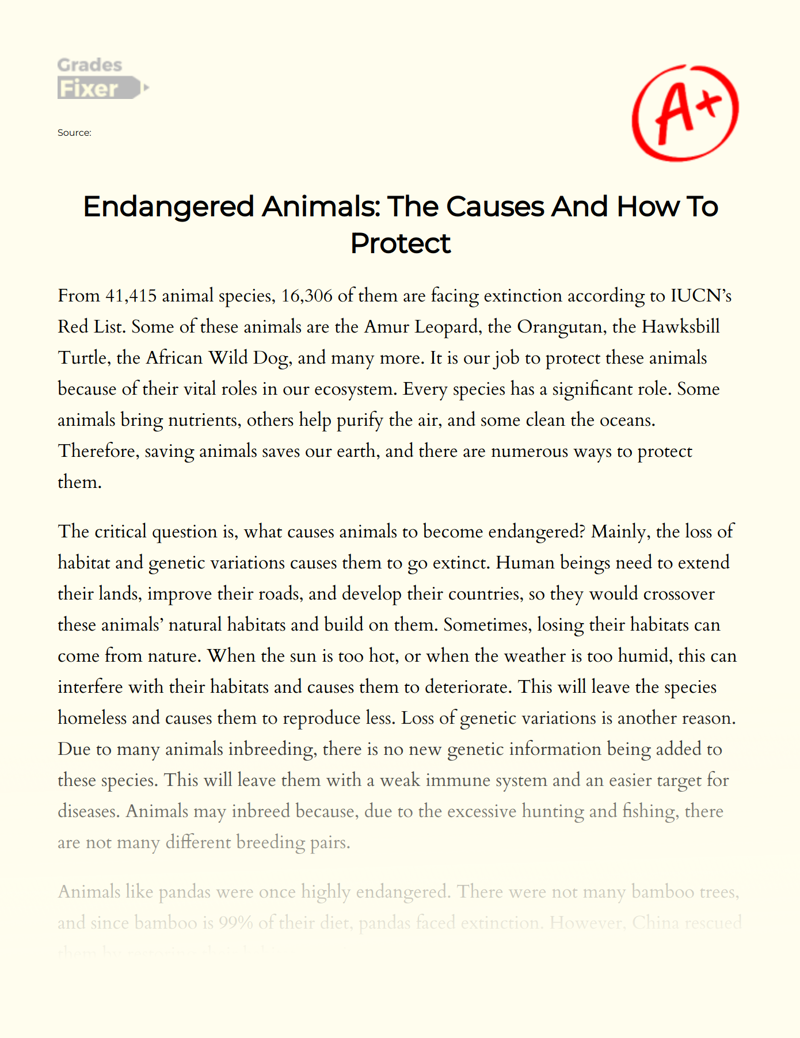
Still can’t find what you need?
Browse our vast selection of original essay samples, each expertly formatted and styled
Related Essays on Endangered Species
Imagine you are an animal. You’ve been wandering the wastelands, which used to be a lush green forest, what used to be your home. Its late spring, right about time for mating season. Normally, you’d be out calling for a mate, [...]
Giant pandas, or Ailuropoda, are one of the most beloved and iconic animals in the world. Their distinctive black and white fur, gentle demeanor, and unique diet of bamboo have captivated people around the globe. However, the [...]
Red pandas are “raccoon-like” animals with fluffy fur ranging from orange, brown, black, and white. The red panda is found in Central China, Nepal, Burma, and other places in the surrounding area. They live in isolated mountain [...]
The job of a marine biologist is to study and conserve the ocean, and all the creatures within it. While their main focus is the water, a lot of their work is conducted on dry land, as they fight for regional laws, fisherman [...]
Endangerment is a bigger issue, one of them that includes the animals as well as the atmosphere where they interact with each other and live. To solve or elevate this problem every aspect related to this need to be studied. So, [...]
In the early days, estimates of abundance of species were derived at large geographic scales through the administration of questionnaires to local people (Sugiyama and Soumah 1988). Scientists have unanimously agreed that for [...]
Related Topics
By clicking “Send”, you agree to our Terms of service and Privacy statement . We will occasionally send you account related emails.
Where do you want us to send this sample?
By clicking “Continue”, you agree to our terms of service and privacy policy.
Be careful. This essay is not unique
This essay was donated by a student and is likely to have been used and submitted before
Download this Sample
Free samples may contain mistakes and not unique parts
Sorry, we could not paraphrase this essay. Our professional writers can rewrite it and get you a unique paper.
Please check your inbox.
We can write you a custom essay that will follow your exact instructions and meet the deadlines. Let's fix your grades together!
Get Your Personalized Essay in 3 Hours or Less!
We use cookies to personalyze your web-site experience. By continuing we’ll assume you board with our cookie policy .
- Instructions Followed To The Letter
- Deadlines Met At Every Stage
- Unique And Plagiarism Free
9 of the most shocking facts about global extinction - and how to stop it

Across the world, wildlife is under severe threat. Image: REUTERS/Baz Ratner
.chakra .wef-1c7l3mo{-webkit-transition:all 0.15s ease-out;transition:all 0.15s ease-out;cursor:pointer;-webkit-text-decoration:none;text-decoration:none;outline:none;color:inherit;}.chakra .wef-1c7l3mo:hover,.chakra .wef-1c7l3mo[data-hover]{-webkit-text-decoration:underline;text-decoration:underline;}.chakra .wef-1c7l3mo:focus,.chakra .wef-1c7l3mo[data-focus]{box-shadow:0 0 0 3px rgba(168,203,251,0.5);} Natalie Marchant

.chakra .wef-9dduvl{margin-top:16px;margin-bottom:16px;line-height:1.388;font-size:1.25rem;}@media screen and (min-width:56.5rem){.chakra .wef-9dduvl{font-size:1.125rem;}} Explore and monitor how .chakra .wef-15eoq1r{margin-top:16px;margin-bottom:16px;line-height:1.388;font-size:1.25rem;color:#F7DB5E;}@media screen and (min-width:56.5rem){.chakra .wef-15eoq1r{font-size:1.125rem;}} Future of the Environment is affecting economies, industries and global issues

.chakra .wef-1nk5u5d{margin-top:16px;margin-bottom:16px;line-height:1.388;color:#2846F8;font-size:1.25rem;}@media screen and (min-width:56.5rem){.chakra .wef-1nk5u5d{font-size:1.125rem;}} Get involved with our crowdsourced digital platform to deliver impact at scale
Stay up to date:, future of the environment.
- Wildlife population sizes dropped by 68% between 1970 and 2018.
- Species are becoming extinct quicker nowadays than ever before.
- Biodiversity is vital to the health and livelihoods of the planet's eight billion people.
Earth’s fate and the devastation of the natural world were recently put under the microscope with the release of Sir David Attenborough’s Netflix documentary A Life On Our Planet .
It marks a departure from his usual nature documentary format and instead grieves for the damage wreaked by climate change and other forms of human interference.
Have you read?
David attenborough leads call for world to invest $500 billion a year to protect nature, david attenborough: 'the garden of eden is no more'. read his davos speech in full, sir david attenborough has just joined instagram – and already broken a world record.
It’s an emotional watch, as the naturalist recounts the environmental changes he has seen first-hand throughout his career, such as the devastation of the Borneo rainforest and its native orangutan population.
Here are nine reasons we too should be concerned about the future of the planet and the millions of species which call it home.
1. More than one million species are now at risk of extinction
Over a million species of animal and plant life are now threatened with dying out – more than ever before in human history, according to the International Science-Policy Platform on Biodiversity and Ecosystem Services (IPBES).
2. Wildlife population sizes dropped by two thirds since 1970
There has been an average 68% drop in global population sizes of amphibians, birds, fish mammals and reptiles between 1970 and 2016, according to the WWF’s Living Planet Report 2020 .

3. Tropical sub-regions of Americas showing biggest declines
The WWF study added that there was a 94% decline of wildlife populations in tropical sub-regions of the Americas over the 50 years from 1970 – the largest fall observed anywhere on Earth.
4. Species dying off more frequently than ever before
Species are dying off 1,000 times more frequently today than during the 60 million years before the arrival of humans, according to a 2014 study by Brown University in the US. The report reinforces the “urgency to conserve what is left”, said lead author Jurriaan de Vos.
5. Freshwater species declining faster than anything else
Populations of freshwater wildlife species are declining disportionately faster than others, dropping by an average of 84% between 1970 and 2018, WWF’s Living Planet Report 2020 showed. The figure also marks a rise of 1% on the 83% reported two years ago.
6. Swathes of tropical forest lost to agriculture
Some 100 million hectares of tropical forest were lost between 1980 and 2000, according to the IPBES. This was largely down to cattle ranching in Latin America and plantations in South-East Asia, researchers added.
7. Nearly 40% of plants at risk of extinction
Four in 10 (39.4%) plants are at risk of dying out, according to the Royal Botanic Gardens Kew’s State of the World’s Plants and Fungi report. An additional challenge is identifying them before extinction, with 1,942 new species of plants identified last year alone.
8. Industrial agriculture driving decline of insects
Dramatic rates of decline could lead to over 40% of the world’s insect species disappearing within decades – with habitat loss due to industrial agriculture the main driver behind the decrease, according to a study published in Science Direct.
9. Bird species also seeing populations threat
Some 3.5% of domesticated birds have become extinct since 2016, the IPBES reported. In addition, nearly a quarter (23%) of threatened birds have already been affected by climate change, The global assessment report on Biodiversity and Ecosystem Services added.
Our ocean covers 70% of the world’s surface and accounts for 80% of the planet’s biodiversity. We can't have a healthy future without a healthy ocean - but it's more vulnerable than ever because of climate change and pollution.
Tackling the grave threats to our ocean means working with leaders across sectors, from business to government to academia.
The World Economic Forum convenes the Friends of Ocean Action , a coalition of global leaders from a wide range of sectors who are working together to protect the seas. From a programme to scale blue carbon benefits through coordinated action with governments to unlock finance, strengthen and empower local communities, to a global partnership to catalyze science-based actions towards healthy and sustainable blue food value chains, the Forum’s Ocean Action Agenda is pushing for new solutions and aiming to support 1000 Ocean Startups by 2030 that are creating a wave of innovation to address global challenges.
The Forum's Ocean Action Agenda also works closely with our industry partners, such as offshore wind developers and ports, to support them in their transitions towards a nature positive and net zero future. Climate change is an inextricable part of the threat to our ocean, with rising temperatures and acidification disrupting fragile ecosystems. The Forum runs a number of initiatives to support the shift to a low-carbon economy , including hosting the Alliance of CEO Climate Leaders, who have cut emissions in their companies by 9%.
Is your organization interested in working with the World Economic Forum? Find out more here .
Why is biodiversity important?
Both the 2019 IPBES and 2020 WWF reports stress that the loss of habitats and species pose as much of a threat to life on Earth as climate change.
For biodiversity is not only vital for a flourishing natural world. Its deterioration also threatens the livelihoods, economies, food security and health of the world's eight billion people – a fact brought into sharp focus by the impact of the ongoing coronavirus pandemic.
But all is not lost. While Attenborough brands the damage as human kind’s “greatest mistake”, his final message is more optimistic: “If we act now, we can yet put it right.”
What can we do to save the planet?
Experts agree that one of the best ways of saving the planet is through transformation of the global food system, with agriculture accounting for nearly 60% of global biodiversity loss and about a quarter of CO2 emissions worldwide .
Consumers can make a difference by choosing to eat less meat and making more sustainable food choices, as farming animals uses a lot of land and water.
Meanwhile farmers can be supported to reduce the use of fertilizers and pesticides, diversify crops and phase out ploughing to lessen the environmental impact.
Conservation is also vital to reverse the loss of biodiversity, with the IPBES highlighting the importance of involving the local community – to benefit nature and people alike.
The devastation of biodiversity and climate change are two sides of the coin, so measures to reduce carbon emissions and pollution – such as travelling less, using greener forms of energy and making more eco-friendly consumer choices – are also key.
For as Attenborough says: “If we take care of nature, nature will take care of us.” As the world continues to suffer the fallout of COVID-19, perhaps never before has such as sentiment been more important.
Don't miss any update on this topic
Create a free account and access your personalized content collection with our latest publications and analyses.
License and Republishing
World Economic Forum articles may be republished in accordance with the Creative Commons Attribution-NonCommercial-NoDerivatives 4.0 International Public License, and in accordance with our Terms of Use.
The views expressed in this article are those of the author alone and not the World Economic Forum.
Related topics:
The agenda .chakra .wef-n7bacu{margin-top:16px;margin-bottom:16px;line-height:1.388;font-weight:400;} weekly.
A weekly update of the most important issues driving the global agenda
.chakra .wef-1dtnjt5{display:-webkit-box;display:-webkit-flex;display:-ms-flexbox;display:flex;-webkit-align-items:center;-webkit-box-align:center;-ms-flex-align:center;align-items:center;-webkit-flex-wrap:wrap;-ms-flex-wrap:wrap;flex-wrap:wrap;} More on Nature and Biodiversity .chakra .wef-17xejub{-webkit-flex:1;-ms-flex:1;flex:1;justify-self:stretch;-webkit-align-self:stretch;-ms-flex-item-align:stretch;align-self:stretch;} .chakra .wef-nr1rr4{display:-webkit-inline-box;display:-webkit-inline-flex;display:-ms-inline-flexbox;display:inline-flex;white-space:normal;vertical-align:middle;text-transform:uppercase;font-size:0.75rem;border-radius:0.25rem;font-weight:700;-webkit-align-items:center;-webkit-box-align:center;-ms-flex-align:center;align-items:center;line-height:1.2;-webkit-letter-spacing:1.25px;-moz-letter-spacing:1.25px;-ms-letter-spacing:1.25px;letter-spacing:1.25px;background:none;padding:0px;color:#B3B3B3;-webkit-box-decoration-break:clone;box-decoration-break:clone;-webkit-box-decoration-break:clone;}@media screen and (min-width:37.5rem){.chakra .wef-nr1rr4{font-size:0.875rem;}}@media screen and (min-width:56.5rem){.chakra .wef-nr1rr4{font-size:1rem;}} See all

Court says rich countries must cut emissions faster than developing nations, and other nature and climate stories you need to read this week
Michael Purton
May 30, 2024

Biophilia is the new travel trend – this is why it matters
Michelle Meineke
May 29, 2024

Here’s what adventuring can teach you about leadership

What causes coral bleaching, and how can we stop it?
Andrea Willige

Why nature-positive cities can help transform the planet
Carlos Correa Escaf
May 24, 2024

How Japan is harnessing blue carbon as a pathway to net zero
Naoko Tochibayashi
Reasons Animals Become Endangered
Jennifer Bove is an award-winning writer and editor with a background in field biology.
- University of Missouri in Columbia
:max_bytes(150000):strip_icc():format(webp)/ScreenShot2021-04-07at1.57.45PM-bcef177316c94cdf998457c694cce6d5.png)
- University of Tennessee
Freder / Getty Images
- Animal Rights
- Endangered Species
When an animal species is considered endangered, it means that the International Union for Conservation of Nature (IUCN) has evaluated it as nearly extinct, which means that a significant portion of its range has already died off and the rate of birth is lower than the species' death rate.
Today, more and more animal and plant species are on the verge of extinction because of a variety of major factors that cause a species to become endangered, and as you might expect, humans play a role in quite a few of them. In fact, the biggest threat to endangered animals is human encroachment on their habitats.
Fortunately, conservation efforts around the world are bent on helping these endangered animals revitalize their dwindling populations through a variety of humanitarian efforts, including curtailing illegal poaching, halting pollution, and habitat destruction, and curtailing the introduction of exotic species into new habitats.
Habitat Destruction
Every living organism needs a place to live, but a habitat is not just a residence, it is also where an animal finds food, raises its young and allows the next generation to take over. Unfortunately, humans destroy animal habitats in a number of different ways: building houses, clearing forests to get lumber and plant crops, draining rivers to bring water to those crops, and paving over meadows to make streets and parking lots.
Habitat destruction is the number one reason for animal endangerment, which is why conservation groups work diligently to reverse the effects of human developments. Many non-profit groups like the Nature Conservancy clean up coastlines and establish nature preserves to prevent further harm to native environments and species around the world.
In addition to physical encroachment, human development of animals' habitats pollutes the natural landscape with petroleum products, pesticides, and other chemicals, which destroy food sources and viable shelters for the creatures and plants of that area.
As a result, some species die outright while others are pushed into areas where they can't find food and shelter. Worse yet, when one animal population suffers it affects many other species in its food web so more than one species' population is likely to decline.
Introduction of Exotic Species
An exotic species is an animal, plant, or insect that is introduced into a place where it did not evolve naturally. Exotic species often have a predatory or competitive advantage over native species, which have been a part of a particular biological environment for centuries, because even though native species are well adapted to their surroundings, they may not be able to deal with species that closely compete with them for food. Basically, native species haven't developed natural defenses for an exotic species and vice versa.
One example of endangerment due to both competition and predation is the Galápagos tortoise. Non-native goats were introduced to the Galápagos Islands during the 20th century. These goats fed on the tortoises' food supply, causing the number of tortoises to decline rapidly. Because the tortoises could not defend themselves or stop the overpopulation of goats on the island, they were forced to abandon their native feeding grounds.
Many countries have passed laws banning specific exotic species known to endanger native habitats from entering the country. Exotic species are sometimes referred to as invasive species, especially in cases of banning them. For instance, the United Kingdom has placed raccoons, mongooses, and cabbages on their invasive species list, all of which are barred from entering the country.
Illegal Hunting and Fishing
When hunters ignore rules that regulate the number of animals that should be hunted (a practice known as poaching), they can reduce populations to the point that species become endangered. Unfortunately, poachers are often hard to catch because they are deliberately trying to evade authorities, and they operate in areas where enforcement is weak.
Furthermore, poachers have developed sophisticated techniques for smuggling animals. Baby bears, leopards, and monkeys have been sedated and stuffed into suitcases for transport. Live animals have been sold to people who want exotic pets or medical research subjects. And, animal pelts and other body parts are also secretly smuggled across borders and sold through black market networks of buyers who pay high prices for illegal animal products.
Even legal hunting, fishing, and gathering of wild species can lead to population reductions that cause species to become endangered. A lack of restriction on the whaling industry in the 20th century is one example. It wasn't until several whale species were nearing extinction that countries agreed to abide by an international moratorium. Some whale species have rebounded thanks to this moratorium but others remain at risk.
International laws forbid these practices, and there are a number of government and nongovernment organizations (NGOs) whose sole purpose is to stop illegal poaching, especially of animals like elephants and rhinoceroses. Thanks to the efforts of groups like the International Anti-Poaching Foundation and local conservation groups like the PAMS Foundation in Tanzania, these endangered species have human advocates fighting to protect them from outright extinction.
Natural Causes
Of course, species endangerment and extinction can happen without human interference. Extinction is a natural part of evolution. Fossil records show that long before people came along, factors such as overpopulation, competition, sudden climatic change, and catastrophic events like volcanic eruptions and earthquakes drove the decline of numerous species.
Determining Which Species Are at Risk
There are a few warning signs that a species could become extinct . If a species has some economic importance, such as the Atlantic salmon, it may be at risk. Surprisingly, large predators, who we might expect to have an advantage over other species, are often at risk as well. This list includes grizzly bears, bald eagles , and gray wolves .
A species whose gestational period is lengthy, or who have small numbers of offspring at each birth has the potential to become endangered more readily. The mountain gorilla and California condor are two examples. And species with weak genetic makeup, like manatees or giant pandas , have more risk of extinction with each generation.
" Losing Their Homes Because of the Growing Needs of Humans ." World Wildlife Foundation.
Marris, Emma. " Goodbye Galapagos Goats ." Nature , 2009, doi:10.1038/news.2009.61
" Adoption of the First List of Invasive Alien Species of Union Concern ." European Commission . Published July 13, 2016.
" Whales ." World Wildlife Fund .
- 14 Most Endangered Whales, Porpoises, and Dolphins
- 11 Endangered Species That Are Still Hunted for Food
- 11 Critically Endangered Turtle Species
- 11 Recently Extinct Animals
- What Does the Term 'Endangered Species' Mean?
- 10 of the Cutest Endangered Species
- How the Sixth Mass Extinction Affects the U.S. Economy
- 8 Incredible Animals Being Hunted Into Extinction
- 20 Animals You Didn't Know Are Going Extinct
- Cats Are Going Extinct: 12 Most Endangered Feline Species
- 10 of North America's Most Endangered Birds
- Why Are Gorillas Endangered?
- 3 Types of Biodiversity: Overview and Importance
- The Endangered Species Act: Summary, Impact, and Current Status
- Are Sea Lions Endangered? Conservation Status and Threats
- The World’s Smallest Tiger Is Inching Towards Extinction
The Unique Characteristics of Tropical Rainforests
This essay about the unique characteristics of tropical rainforests explains their vital role in the global ecosystem. It discusses the consistent warm, humid climate that supports year-round plant growth and the multi-layered structure of these forests, which includes the emergent, canopy, understory, and forest floor layers. The essay highlights the incredible biodiversity found in tropical rainforests, noting that they house more than half of the world’s plant and animal species despite covering only about 6% of the Earth’s surface. It also emphasizes the intricate interdependence among species and the significant threats posed by deforestation. Finally, the essay underscores the importance of conservation efforts to protect these critical ecosystems.
How it works
In the realm of terrestrial ecosystems, tropical rainforests emerge as among the most vibrant and indispensable. Nestled proximate to the equatorial belt, these verdant expanses pulsate with vitality and are renowned for their remarkable biodiversity, intricate configurations, and pivotal ecological functions. The distinctive essence of these rainforests resides in their climatic conditions, the stratified arrangement of their vegetation, and the astonishing array of species that inhabit them.
Let us commence our discourse with an examination of the climate. Tropical rainforests thrive amidst warm, moisture-laden atmospheres that endure with remarkable constancy throughout the annual cycle.
Temperatures typically oscillate within the range of 20 to 30 degrees Celsius, fostering an environment conducive to unceasing botanical proliferation. Precipitation in these locales is copious, often surpassing 2000 millimeters annually. Such persistent warmth and moisture furnish an optimal milieu for exuberant vegetation and prolific biodiversity. Unlike temperate latitudes, where flora must contend with the vicissitudes of seasonal shifts, the botanical assemblages of tropical rainforests can proliferate unimpeded throughout the year, engendering some of the densest and most diverse vegetal communities on the planet.
The structural composition of tropical rainforests represents another hallmark feature. These arboreal realms are stratified into numerous tiers, each harboring its own distinct array of flora and fauna. At the zenith lies the emergent layer, where towering arboreal sentinels, soaring to heights of up to 70 meters, pierce the celestial expanse. These arboreal colossi provide sanctuary to an eclectic assortment of avian and insectile denizens that flourish amidst lofty altitudes. Immediately below resides the canopy layer, enshrouding the forest in a verdant, emerald canopy. This leafy expanse, measuring approximately 30 to 45 meters above terra firma, intercepts the lion’s share of sunlight and precipitation, sustaining a myriad of life forms, including primates, sloths, and an assortment of avian species. Nestled beneath the verdant canopy is the understory, a shaded realm populated by diminutive arboreal specimens and shrubs acclimated to subdued luminosity. Lastly, the forest floor, enshrouded in decaying organic detritus, serves as a substratum for fungi, insects, and terrestrial fauna. This tiered arrangement is of paramount import, affording diverse species niches for cohabitation, thereby mitigating interspecific competition and fostering an exalted degree of biodiversity.
Turning our attention to biodiversity, tropical rainforests stand unparalleled. These ecosystems, despite covering a mere 6% of the Earth’s terrestrial expanse, serve as the abode for more than half of the globe’s plant and animal species. The profusion of life is staggering, encompassing myriad species of insects, avians, mammals, reptiles, and amphibians, many of which are endemic, confined solely to these precincts. This kaleidoscope of biodiversity owes its existence to the bountiful resources and diverse habitats provided by the rainforest milieu. For instance, resplendent parrots and toucans flit amidst the verdant canopy, while apex predators such as jaguars and tapirs prowl the terra firma. Each organism has staked out its ecological niche, contributing to the ecosystem’s overall robustness and resilience.
One of the most captivating aspects of tropical rainforests lies in the intricate web of interdependency woven among their denizens. Numerous plant and animal species have forged symbiotic alliances that are indispensable for their survival. Consider, for instance, the symbiotic relationships between certain arboreal specimens and their pollinators or seed dispersers. Some arboreal species rely on bats, avians, or insects to transport their pollen from one blossom to another, while others enlist the aid of primates or rodents to ingest their fruits and disperse their seeds through excretion. These mutually beneficial associations ensure the perpetuation and dissemination of plant species while furnishing sustenance and shelter for their animal counterparts. This degree of mutual reliance engenders a harmonious and resilient ecosystem, wherein the loss of a single species can precipitate reverberating consequences throughout the rainforest matrix.
Despite their import, tropical rainforests confront imminent peril from anthropogenic activities. Deforestation, driven by logging, agriculture, and infrastructural expansion, imperils these vital habitats at an alarming pace. The repercussions are dire: dwindling biodiversity, disruption of global hydrological cycles, and augmented carbon emissions exacerbating climate perturbations. The despoliation of rainforests also jeopardizes the subsistence of indigenous communities reliant on these ecosystems for sustenance, habitation, and cultural heritage. As rainforests succumb to degradation, innumerable plant and animal species teeter on the brink of extinction, depriving humanity of invaluable resources with potential pharmacological or utilitarian benefits.
Preservation endeavors are imperative to safeguard these irreplaceable ecosystems. Tactics encompass the establishment of protected reserves, advocacy for sustainable land stewardship practices, and facilitation of reforestation initiatives. Often, international collaboration and financial backing are requisite for the efficacious implementation of these strategies. Moreover, raising awareness regarding the import of tropical rainforests and the perils they confront can galvanize public support for conservation campaigns. Education assumes a pivotal role in effectuating behavioral shifts and incentivizing ecologically responsible choices, such as patronizing sustainably certified products or mitigating carbon emissions.
Exemplars of triumphant conservation endeavors abound. In Costa Rica, for instance, governmental directives and incentives promoting afforestation have precipitated a marked resurgence in the country’s rainforest expanses. Similarly, indigenous communities in the Amazon have adeptly managed their territories through indigenous wisdom and sustainable practices, forestalling extensive tracts of rainforest from succumbing to deforestation. These instances underscore that with judicious strategies and unwavering commitment, the onslaught against tropical rainforests can be arrested, and even reversed.
In summation, tropical rainforests epitomize extraordinary ecosystems characterized by their equatorial climes, intricate tiered configurations, and prodigious biodiversity. The interrelations among the myriad species inhabiting these verdant realms accentuate their ecological significance. Nevertheless, the encroaching perils posed by anthropogenic activities underscore the exigency of conservation endeavors. Safeguarding tropical rainforests transcends mere preservation of their aesthetic allure and biological diversity; it encompasses the preservation of planetary equilibrium and the sustenance of a viable future for all. By esteeming and fortifying these indispensable ecosystems, we can help maintain the balance of nature and foster a sustainable destiny for humankind.
Cite this page
The Unique Characteristics of Tropical Rainforests. (2024, Jun 01). Retrieved from https://papersowl.com/examples/the-unique-characteristics-of-tropical-rainforests/
"The Unique Characteristics of Tropical Rainforests." PapersOwl.com , 1 Jun 2024, https://papersowl.com/examples/the-unique-characteristics-of-tropical-rainforests/
PapersOwl.com. (2024). The Unique Characteristics of Tropical Rainforests . [Online]. Available at: https://papersowl.com/examples/the-unique-characteristics-of-tropical-rainforests/ [Accessed: 2 Jun. 2024]
"The Unique Characteristics of Tropical Rainforests." PapersOwl.com, Jun 01, 2024. Accessed June 2, 2024. https://papersowl.com/examples/the-unique-characteristics-of-tropical-rainforests/
"The Unique Characteristics of Tropical Rainforests," PapersOwl.com , 01-Jun-2024. [Online]. Available: https://papersowl.com/examples/the-unique-characteristics-of-tropical-rainforests/. [Accessed: 2-Jun-2024]
PapersOwl.com. (2024). The Unique Characteristics of Tropical Rainforests . [Online]. Available at: https://papersowl.com/examples/the-unique-characteristics-of-tropical-rainforests/ [Accessed: 2-Jun-2024]
Don't let plagiarism ruin your grade
Hire a writer to get a unique paper crafted to your needs.

Our writers will help you fix any mistakes and get an A+!
Please check your inbox.
You can order an original essay written according to your instructions.
Trusted by over 1 million students worldwide
1. Tell Us Your Requirements
2. Pick your perfect writer
3. Get Your Paper and Pay
Hi! I'm Amy, your personal assistant!
Don't know where to start? Give me your paper requirements and I connect you to an academic expert.
short deadlines
100% Plagiarism-Free
Certified writers

The Queen Zone
The Urgent Extinction Crisis: 20 Animals Lost Forever in the Past Decade
Posted: May 30, 2024 | Last updated: May 30, 2024
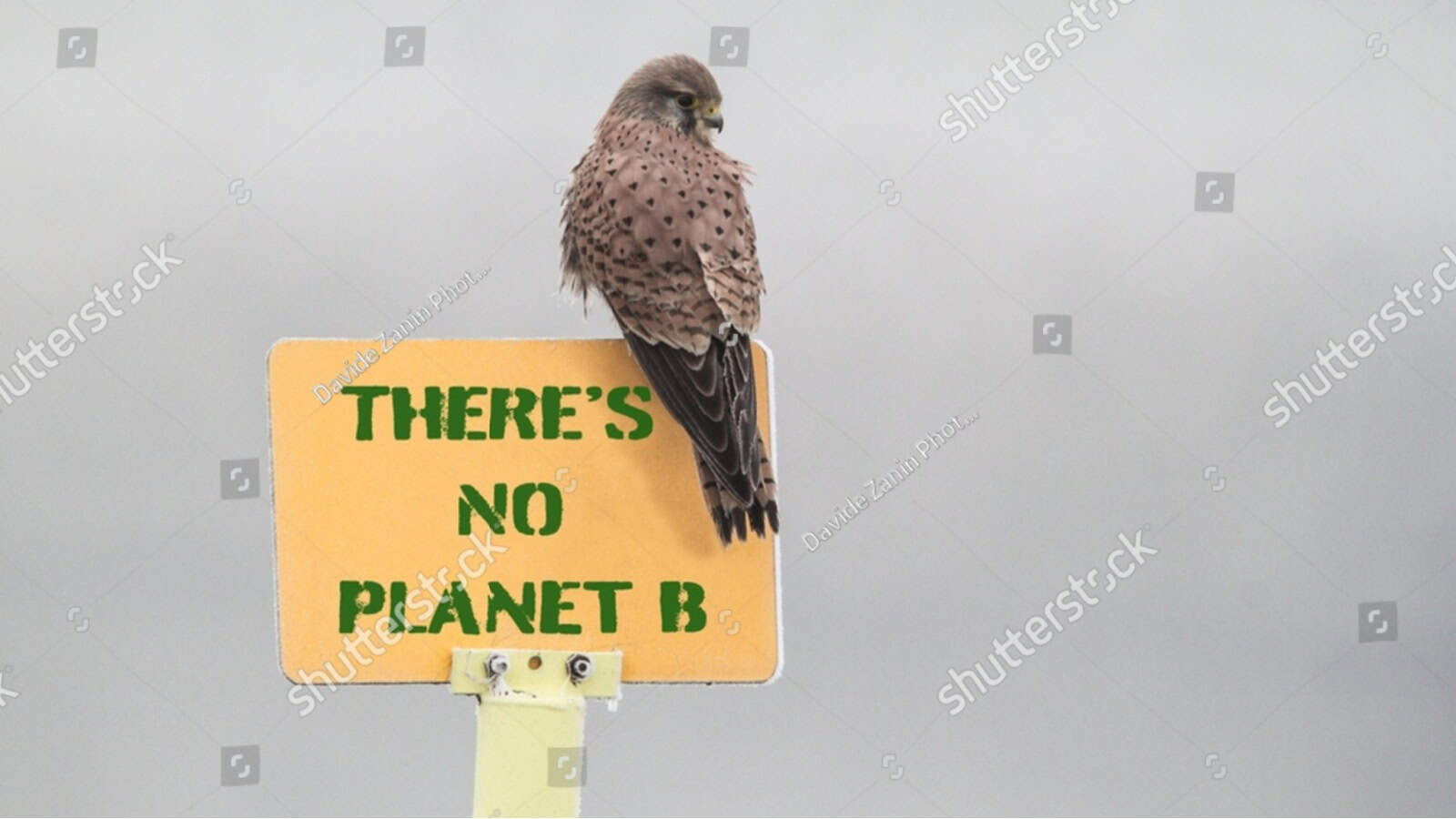
The past decade has witnessed a significant acceleration in the rate of species extinction, driven primarily by human activities such as habitat destruction, climate change, pollution, and overexploitation. This article explores 20 animal species that have gone extinct in the last 10 years, highlighting the urgent need for conservation efforts to prevent further losses.

1. Rabbs’ Fringe-Limbed Treefrog
The Rabbs’ fringe-limbed treefrog (Ecnomiohyla rabborum) was declared extinct in 2016. Native to Panama, this species faced habitat loss and a deadly fungal disease known as chytridiomycosis.
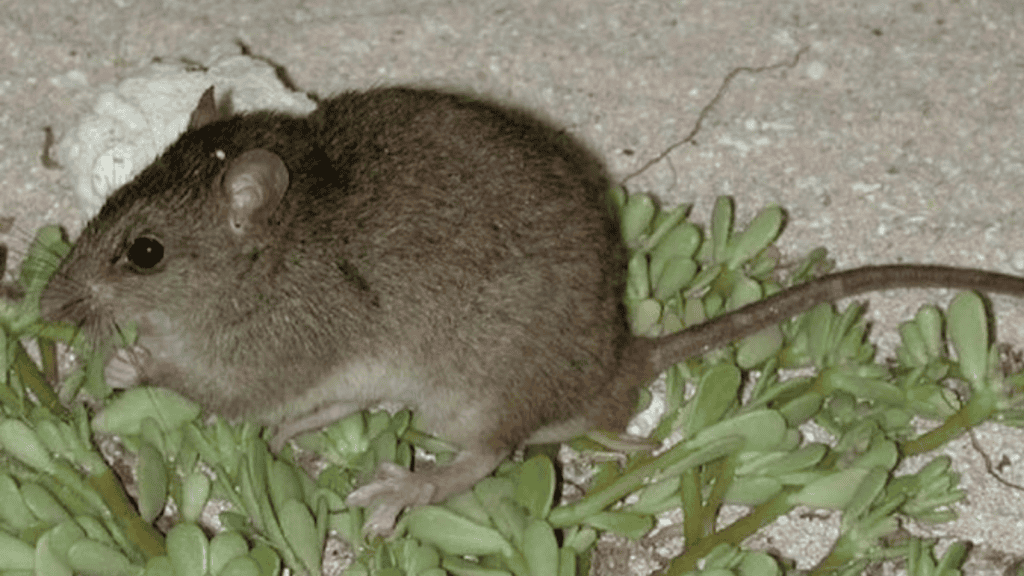
2. Bramble Cay Melomys
The Bramble Cay melomys (Melomys rubicola), a rodent native to a small island in the Great Barrier Reef , was declared extinct in 2019. Rising sea levels and storm surges, exacerbated by climate change, destroyed its habitat.
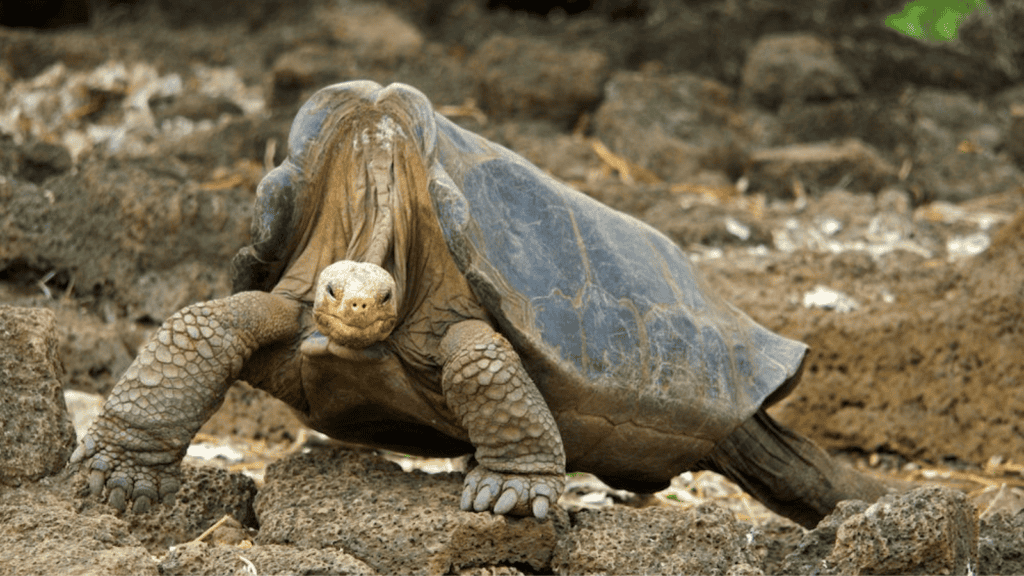
3. Pinta Island Tortoise
The Pinta Island tortoise (Chelonoidis abingdonii), also known as Lonesome George , was declared extinct in 2015. The species suffered from habitat destruction and introduced species.
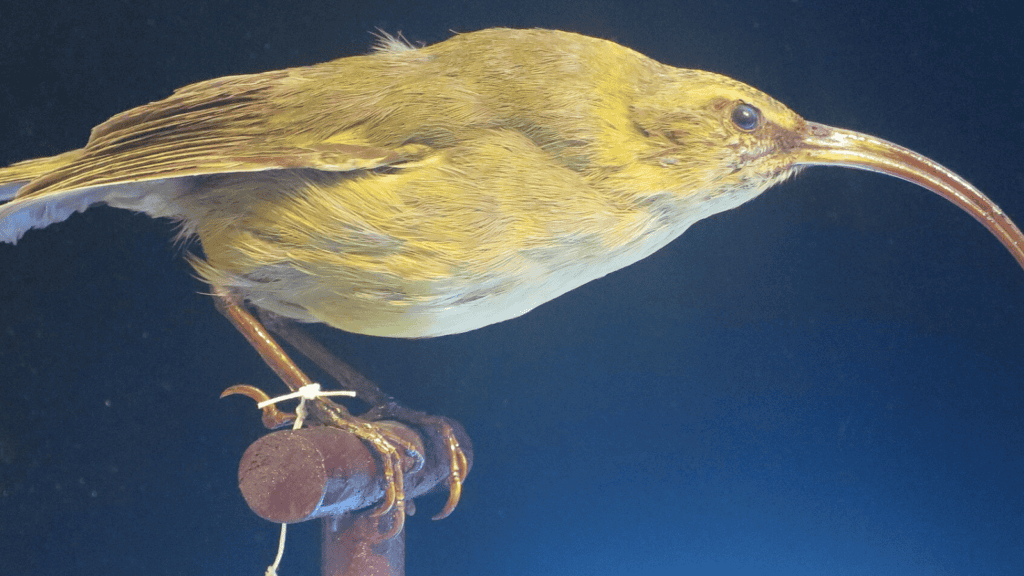
4. Kauaʻi ʻAkialoa
The Kauaʻi ʻakialoa (Akialoa stejnegeri), a bird native to Hawaii , was declared extinct in 2016. Habitat destruction, disease, and predation by introduced species contributed to its decline.

5. Alagoas Foliage-Gleaner
The Alagoas foliage-gleaner (Philydor novaesi), a bird from Brazil , was declared extinct in 2019. Deforestation and habitat loss were the primary causes.
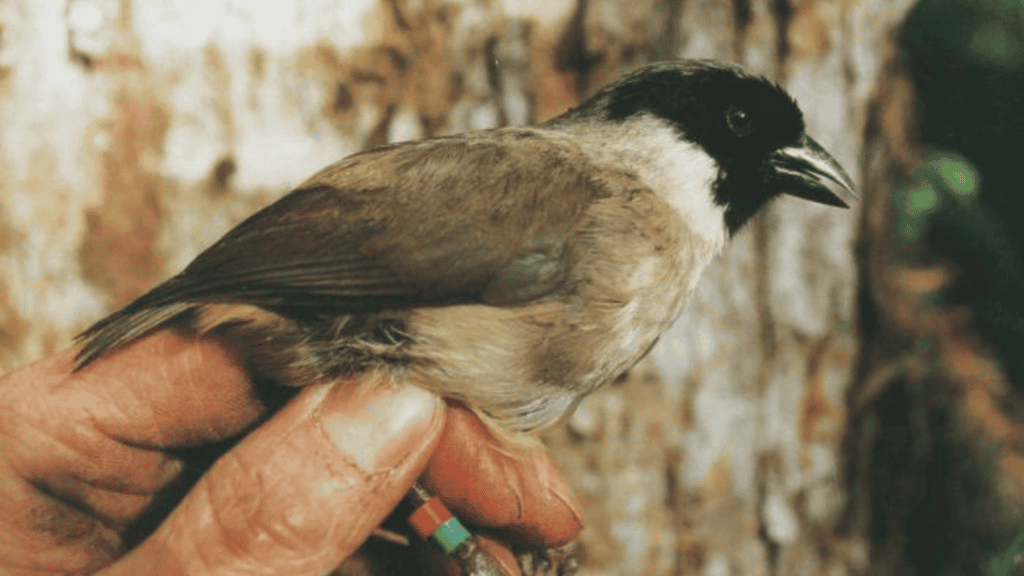
The Poʻouli (Melamprosops phaeosoma), a Hawaiian bird, was declared extinct in 2019. Habitat loss, disease, and predation by introduced species led to its demise.
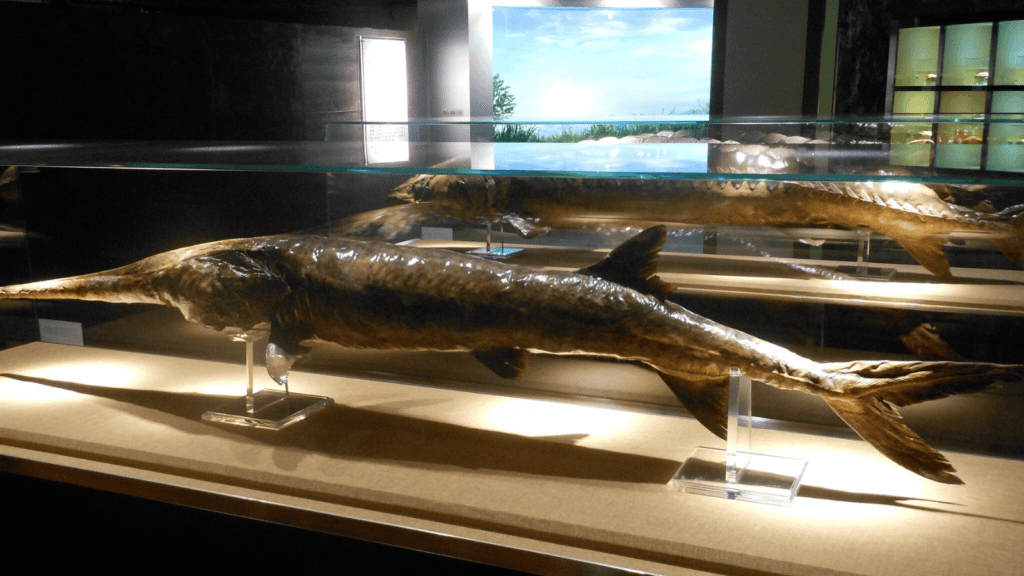
7. Chinese Paddlefish
The Chinese paddlefish (Psephurus gladius), one of the largest freshwater fish , was declared extinct in 2020. Overfishing and habitat fragmentation due to dam construction were the main factors.
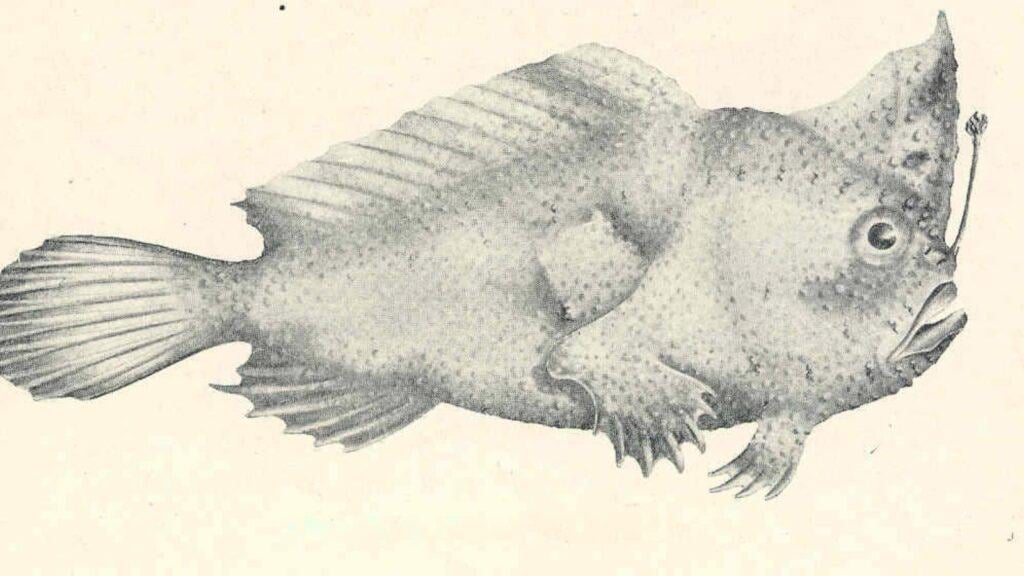
8. Smooth Handfish
The smooth handfish (Sympterichthys unipennis), a marine fish from Australia , was declared extinct in 2020. Habitat degradation and climate change were significant contributors.

9. Jalpa False Brook Salamander
The Jalpa false brook salamander (Pseudoeurycea exspectata), native to Guatemala, was declared extinct in 2020. Habitat destruction and pollution were the primary causes.
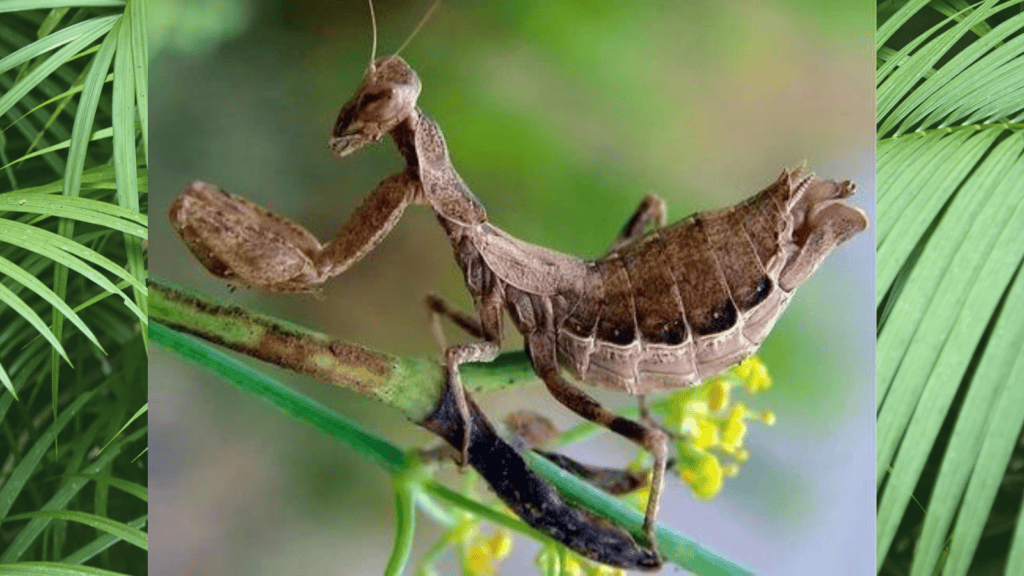
10. Spined Dwarf Mantis
The spined dwarf mantis (Ameles fasciipennis), an insect native to Italy , was declared extinct in 2020. Habitat loss due to agricultural expansion was the main factor.
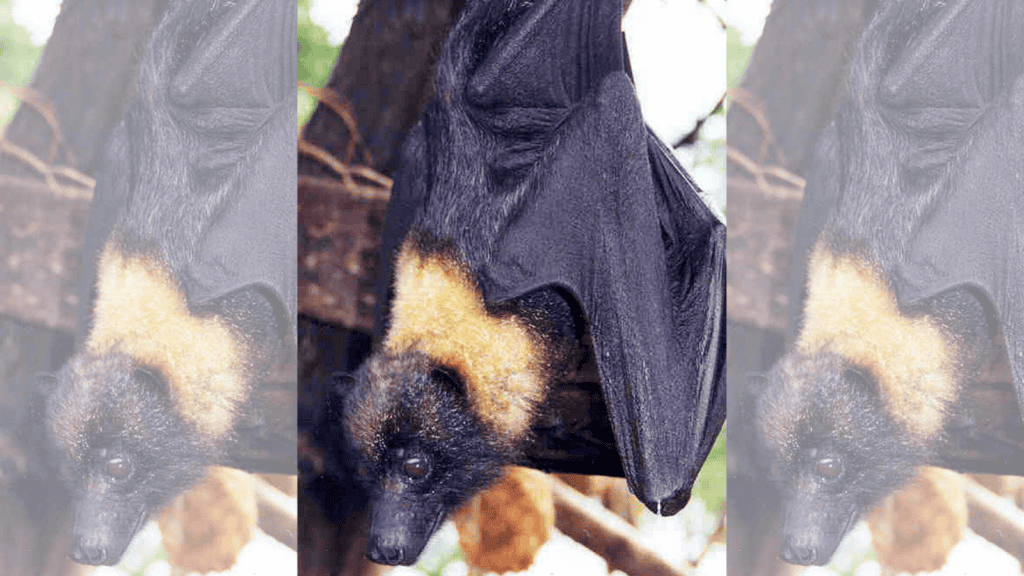
11. Little Mariana Fruit Bat
The little Mariana fruit bat (Pteropus tokudae), native to Guam , was declared extinct in 2021. Habitat destruction and hunting led to its decline.
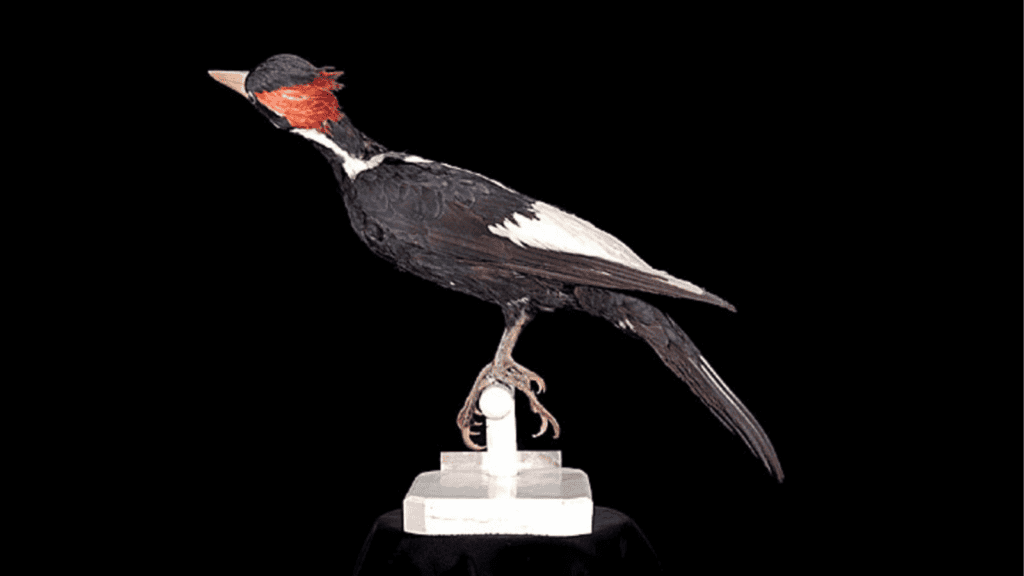
12. Ivory-Billed Woodpecker
The ivory-billed woodpecker (Campephilus principalis), once found in the southeastern United States, was declared extinct in 2021 . Habitat loss and hunting were the primary causes.
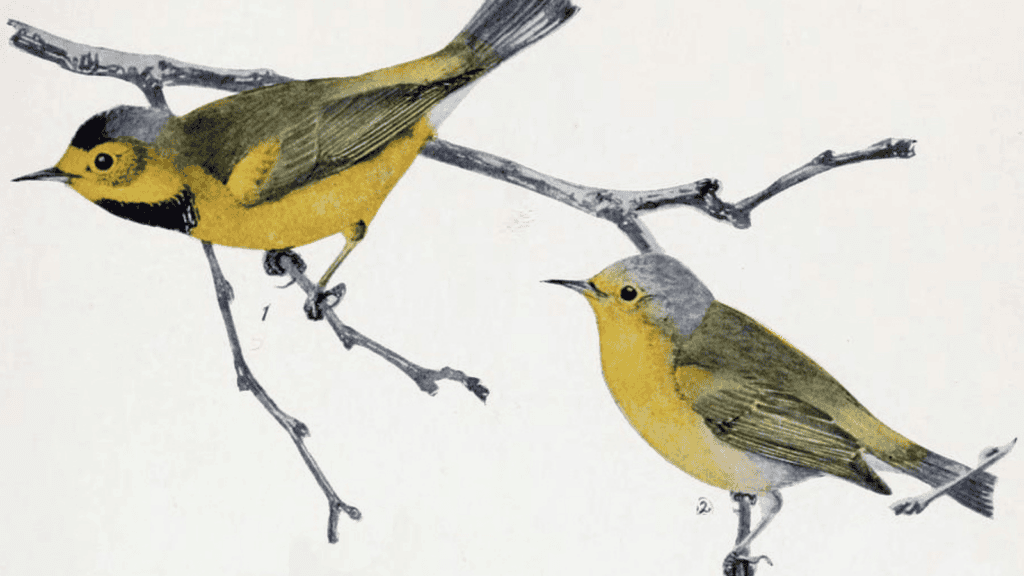
13. Bachman’s Warbler
Bachman’s warbler (Vermivora bachmanii), a bird native to the southeastern United States , was declared extinct in 2021. Habitat destruction and possibly invasive species contributed to its extinction.

14. Flat Pigtoe Mussel
The flat pigtoe mussel (Pleurobema marshalli), native to the southeastern United States, was declared extinct in 2021. Habitat degradation and pollution were the main factors.
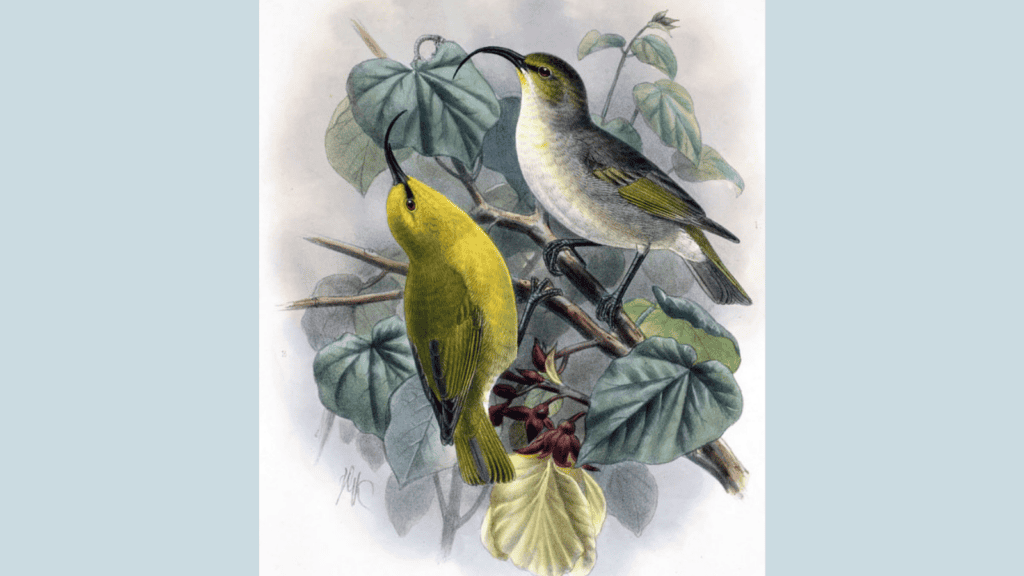
15. Kaua’i Nukupu’u
The Kaua’i nukupu’u (Hemignathus hanapepe), a bird from Hawaii, was declared extinct in 2021 . Habitat loss, disease, and predation by introduced species led to its decline.
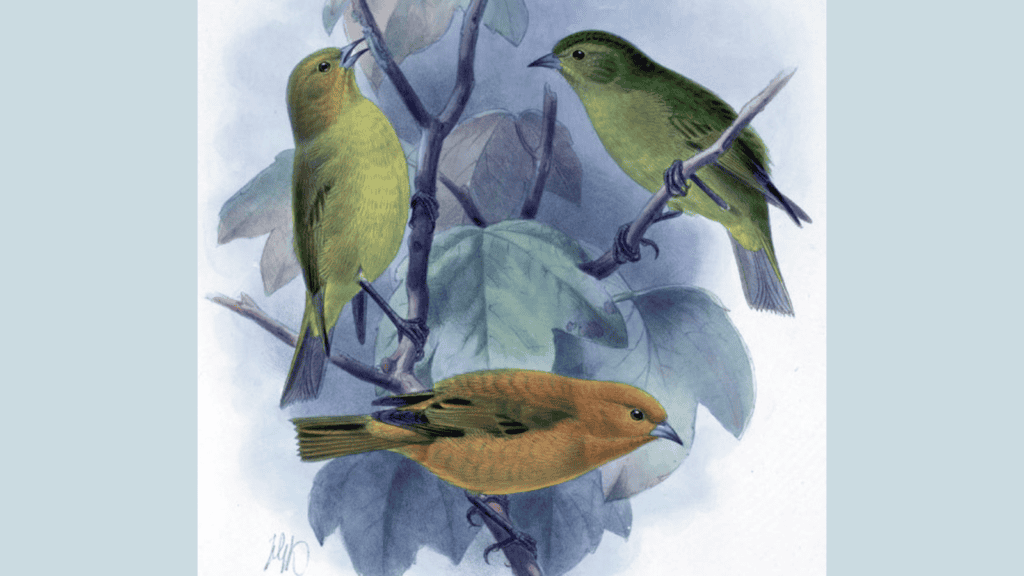
16. Maui ʻĀkepa
The Maui ʻākepa (Loxops ochraceus), a bird native to Hawaii , was declared extinct in 2021. Habitat destruction and disease were the primary causes.
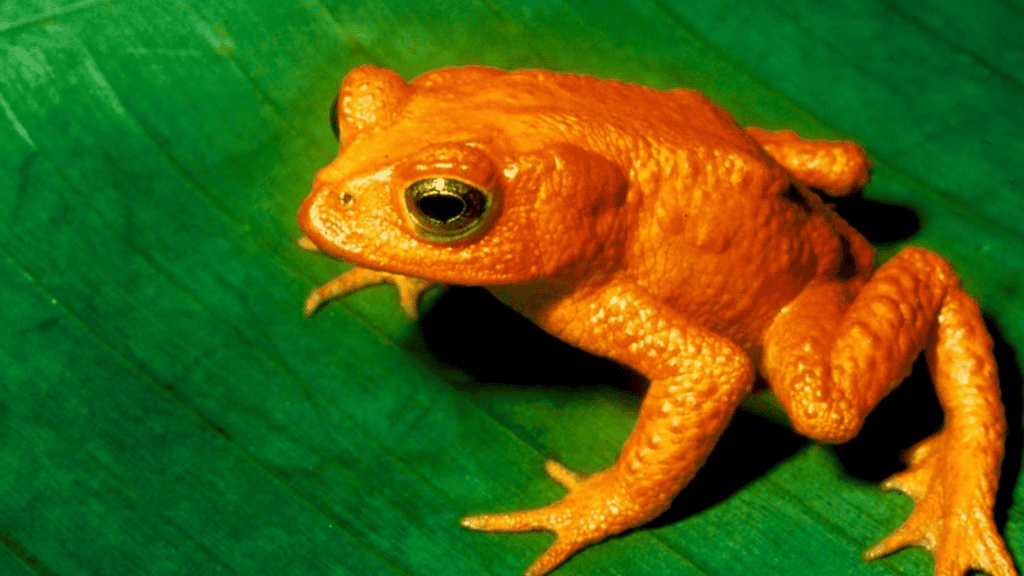
17. Golden Toad
The golden toad (Incilius periglenes), native to Costa Rica, was declared extinct in 2019. Climate change and habitat loss were significant contributors.
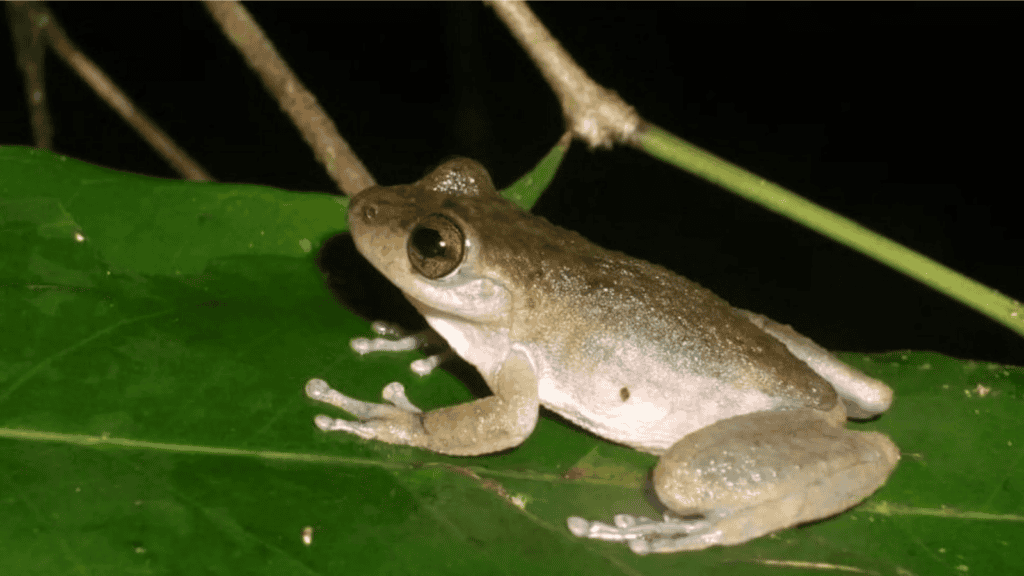
18. Mountain Mist Frog
The mountain mist frog (Litoria nyakalensis), native to Australia , was declared extinct in 2020. Climate change and disease were the main factors.
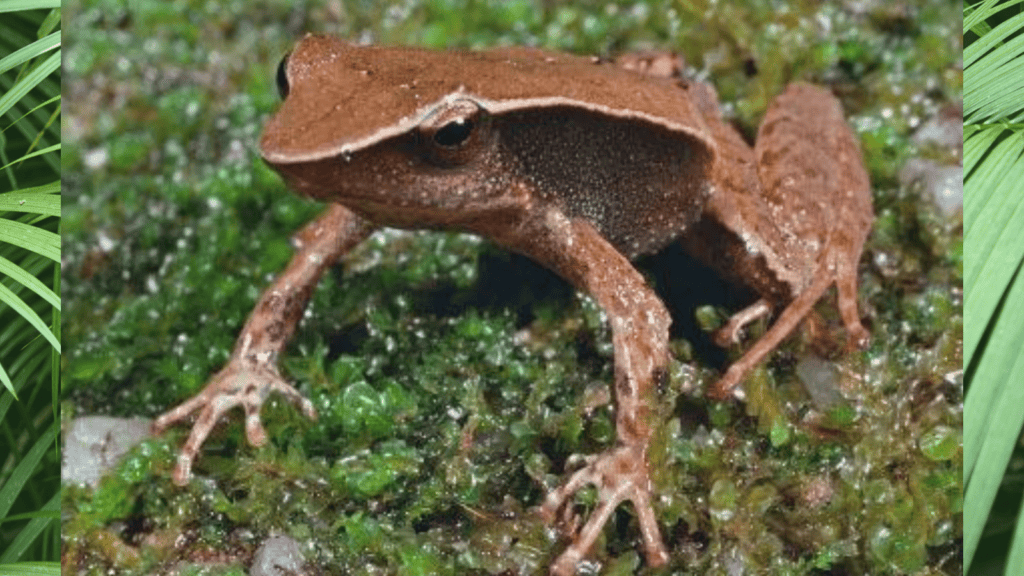
19. Sharp-Snouted Day Frog
The sharp-snouted day frog (Taudactylus acutirostris), also from Australia, was declared extinct in 2020. Habitat loss and disease were significant contributors.
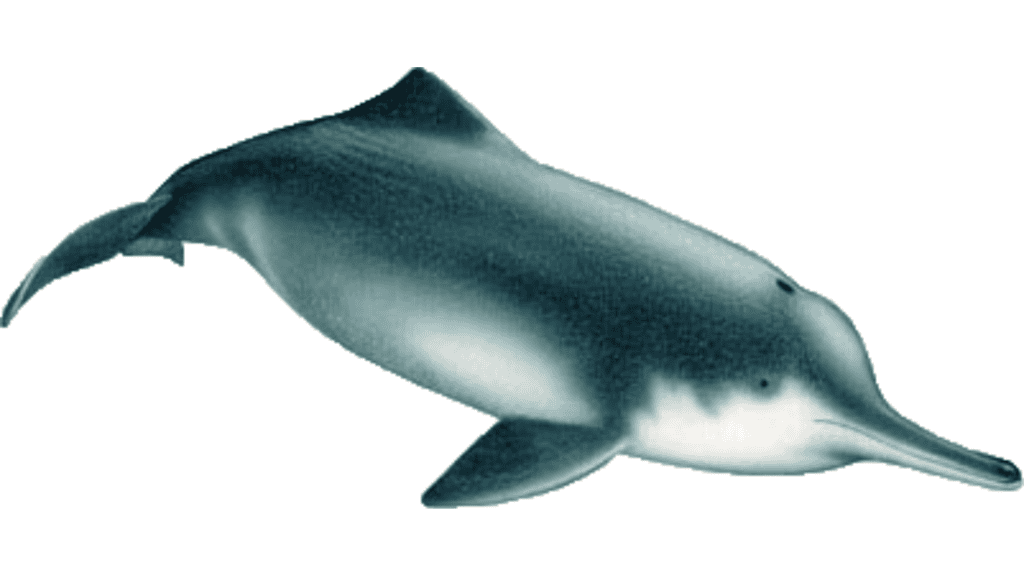
20. Chinese River Dolphin
The Chinese river dolphin (Lipotes vexillifer), also known as the baiji, was declared functionally extinct in 2006, with the last confirmed sighting in 2002. Habitat degradation and pollution were the primary causes.

The Takeaway
The extinction of these species over the past decade underscores the urgent need for comprehensive conservation efforts. Habitat protection, climate change mitigation, and stricter regulations on hunting and pollution are essential to prevent further losses. By taking immediate action, we can help preserve the planet’s biodiversity for future generations.
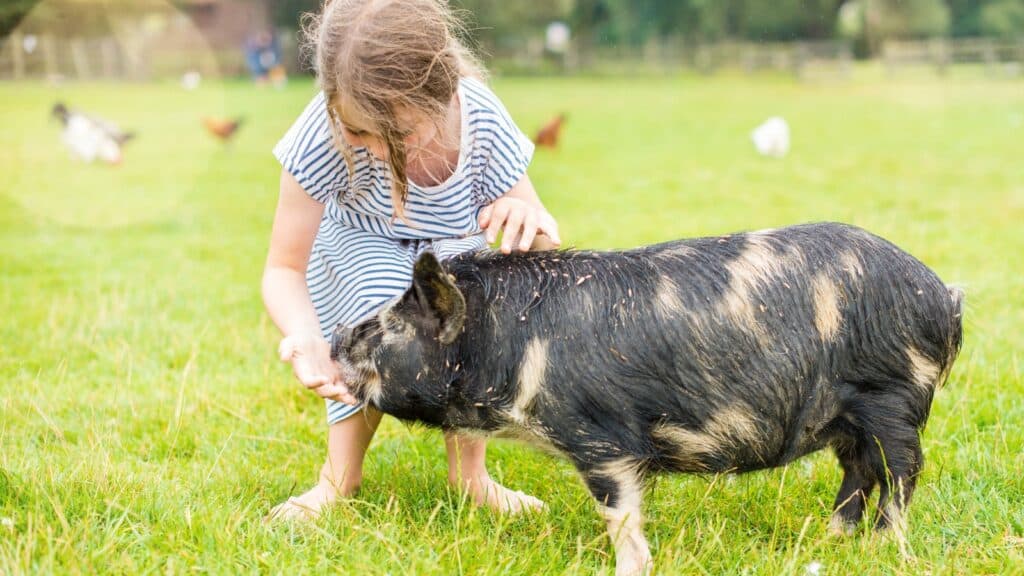
The Ultimate Family Trip: 20 Amazing Animal Sanctuaries You Can Visit In The U.S.!
Time for a new kind of vacation! Here's a list of the top 20 animal sanctuaries in the United States that welcome visitors. A perfect family trip. These sanctuaries provide a safe haven for a variety of animals, including domestic, wild, and farm animals. Each sanctuary has its unique mission and set of animals it cares for, offering educational tours and opportunities to learn more about animal welfare and conservation. READ: The Ultimate Family Trip: 20 Amazing Animal Sanctuaries You Can Visit In The U.S.!
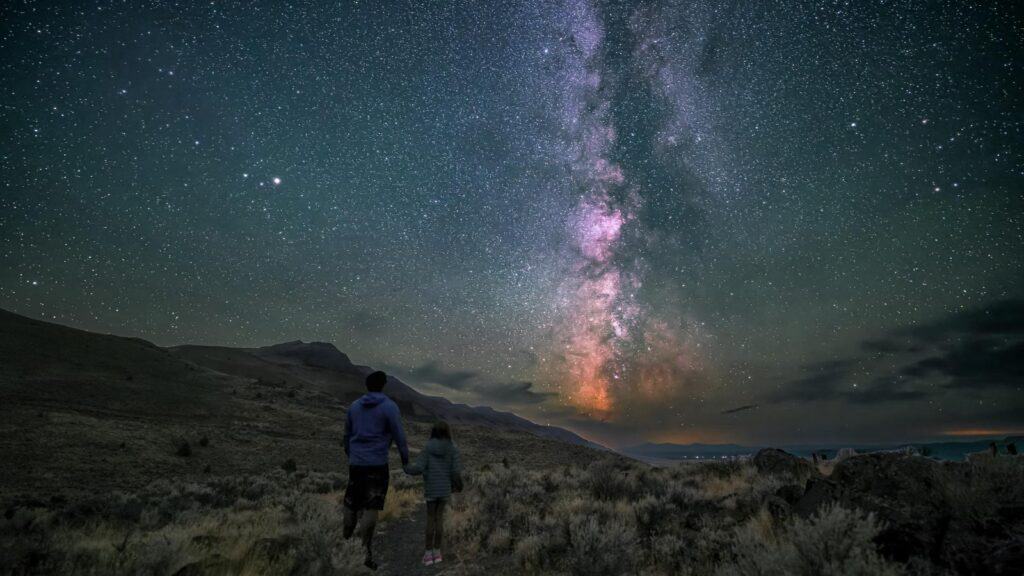
Bucket List Item: Oregon Outback International Dark Sky Sanctuary
Hopefully all of you have had the experience of gazing into the night sky in dark surroundings, so that you could take advantage of the stars, planets and cosmos. Unfortunately, manmade lights often interfere – it is called light pollution for a reason – but did you know that the U.S. can now claim the largest international dark sky sanctuary? You will have to travel to Oregon to take advantage, but it is worth the trip. READ: Bucket List Item: Oregon Outback International Dark Sky Sanctuary

Your Guide To Landing Refreshed: Best Red-Eye Travel Strategies
Where are you traveling to? Somewhere exotic, or a favorite place you return to again and again? Are you taking an overnight "red-eye" flight? There is a reason why they call it a "red-eye"!
We asked some travel experts and frequent flyers for their best tips.Read: Y our Guide To Landing Refreshed: Best Red-Eye Travel Strategies

Join us on this empowering journey as we explore, celebrate, and elevate "her story." The Queen Zone is not just a platform; it's a community where women from all walks of life can come together, share their experiences, and inspire one another. Welcome to a space where the female experience takes center stage. Sign up for our newsletter so you don't miss a thing, Queen!
The post The Urgent Extinction Crisis: 20 Animals Lost Forever in the Past Decade appeared first on The Queen Zone .
More for You
Stephen Hawking once gave a simple answer as to whether there was a God
Mom Has the ‘Best’ Experience Traveling on a Plane With Her Baby
New poll finds 49% of independents and 15% of Republicans think Trump should end campaign after conviction
I ranked 12 fast-food double cheeseburgers from worst to best, and my favorite was also one of the cheapest
"It's Common In Europe But Non-Existent In America": People Are Sharing Little Experiences Or Traditions From Abroad They Wish They Could Adopt Back Home
Mike Tyson Suffers Medical Emergency on Flight to Los Angeles
18 Things That Will Happen if 70 Becomes the New Retirement Age in the US
Woman Transforms Her Home's Exterior After Being Told Not To Paint It White
What Impact Will The SR-72 Dark Star Have On Global Military Balance?
I found Dad washing the car with a paintbrush. His dogs knew exactly what was happening
Loyalty at work no longer pays — and it's employers who are to blame
Cruise ship buffet taboos: 10 things you should never do at mealtime
Mother who ignored her kids at half-marathon finish line speaks out against critics
Federal judge shoots down ‘orchestrated campaign’ to remove Trump-appointed judge in classified documents case
These 10 Mountain Towns Are as Affordable as They Are Beautiful
Using This 4-Word Phrase Instead of 'Thank You' Will Improve Work Relationships and Make You a Better Leader
For first time in a generation a third of Americans 'truly becoming disenfranchised': Peter Mallouk
Packing for a cruise? These items aren’t allowed on board
Young Sheldon's Mandy Joins The Big Bang Theory's Adult Georgie in Fun Video
Ask Amy: Miserable wife contemplates next steps

IMAGES
VIDEO
COMMENTS
This essay will delve into the topic of extinct animals, exploring the causes and consequences of extinction, and the importance of conservation efforts. The Causes of Extinction The primary causes of animal extinction are habitat destruction, overexploitation, climate change, and invasive species.
Planet Earth teems with life and includes thousands of species of vertebrate animals (mammals, reptiles, fish, and birds); invertebrates (insects, crustaceans, and protozoans); trees, flowers, grasses, and grains; and a bewildering array of bacteria, and algae, plus single-celled organisms—some inhabiting scalding deep-sea thermal vents.And yet, this rich profusion of flora and fauna seems ...
Extinction of Animals Essay. This question appeared recently in the IELTS test. It is about how animals become extinct and whether humans should take steps to prevent this from happening. It is a natural process that animal species become extinct, as the dinosaurs did in the past. There is no reason for people to prevent this from happening.
An endangered species is a type of organism that is threatened by extinction.Species become endangered for two main reasons: loss of habitat and loss of genetic variation. Loss of Habitat A loss of habitat can happen naturally. Nonavian dinosaurs, for instance, lost their habitat about 65 million years ago.The hot, dry climate of the Cretaceous period changed very quickly, most likely because ...
This refers to the extinction of species or populations long after habitat alteration. extinction vortex. As populations decline, an insidious mutual reinforcement occurs among biotic and abiotic processes driving population size downward to extinction. extirpation. This refers to extinction of a population rather than of an entire species.
Oil spills kill coastal plants and animals. Poisons wash into waterways. Plastic trash entangles wildlife. It's easy to see how pollution is a big problem for biodiversity. Reptiles in Danger. Species of turtles lived 210 million years ago, at the same time as the dinosaurs. However, some species that are alive today are in danger of extinction.
These extinctions have had widely different causes.About 541 million years ago, ... By eliminating many large animals, this extinction event cleared the way for dinosaurs to flourish. Finally, about 65.5 million years ago, at the end of the Cretaceous period came the fifth mass extinction. This is the famous extinction event that brought the ...
The answer is complicated. From locally extinct to functionally extinct, here are the various ways scientists track species' decline. Extinction is a natural phenomenon: After all, more than 90 ...
Habitat fragmentation, destruction or loss, unsustainable hunting and wildlife trade, global warming and disease are the factors that lead to animal extinction. Based on AZE's [ 1] calculation, endangered species under their observation consist of amphibians (408), birds (217), mammals (131), and reptiles (15).
Most of the Earth's species went extinct roughly 266 million to 252 million years ago in the Permian extinction. Those losses, however, also paved the way for dinosaurs to evolve into existence ...
The phenomenon of animal extinction has been the talking point for a broad variety of people and organizations recently. Due to the increased rates of globalization and the rapid development of industries, the effect that the humankind has been producing on the environment has been amplified (Psihoyos 3). As a result, a range of habitats have ...
When an entire species, or type, of animal dies out, that species is extinct. Once a species becomes extinct, it is gone forever.
biodiversity loss, a decrease in biodiversity within a species, an ecosystem, a given geographic area, or Earth as a whole. Biodiversity, or biological diversity, is a term that refers to the number of genes, species, individual organisms within a given species, and biological communities within a defined geographic area, ranging from the smallest ecosystem to the global biosphere.
I have been searching for a reasonable explanation of preservation of endangered species, and the search continues still. Apart from few redundant examples like bees or birds/animals taking part in pollinating processes or overgrowth/extinction, I can't see any direct explanation on the outcomes of the extinctions of any species, viz. Tigers, Elephants, Rhinos, Deers etc. on the ecosystems ...
Animal extinction is the extermination of animal species. Extinction is essential as it allows a new species to emerge. Extinction typically occurs at a rate of one to two species a year. The current rate of extinction is between 1000 to 10000 times that rate. Mass extinctions are not new.
Extinction is the termination of a certain living form, usually a species, or a language. The death of the last individual of the species (or the last speaker) is considered to be the moment of extinction. This phenomenon of animal extinction s considered to be the world's largest threat to wildlife. In the last 50 years, the wildlife ...
Essay On Animal Extinction. Pleading Guilty to Animal Extinction Animal extinction rates have skyrocketed within recent years due to the numerous detrimental human and environmental activities that currently wreak havoc on our planet. Human beings alone are placing enough strain on animals to leave lasting and harmful effects for years to come.
Published: Dec 16, 2021. From 41,415 animal species, 16,306 of them are facing extinction according to IUCN's Red List. Some of these animals are the Amur Leopard, the Orangutan, the Hawksbill Turtle, the African Wild Dog, and many more. It is our job to protect these animals because of their vital roles in our ecosystem.
5. Freshwater species declining faster than anything else. Populations of freshwater wildlife species are declining disportionately faster than others, dropping byan average of 84%between 1970 and 2018, WWF's Living Planet Report 2020 showed. The figure also marks arise of 1% on the 83%reported two years ago. 6.
Extinction of animal species is a natural process due to some live examples like dinosaurs, dodos etc. It is not reasonable why people should attempt to prevent this from happening. I disagree with this notion and this essay shall elucidate on to justify my stance. To embark with, extinction of animals is the result of excessive poaching.
Habitat loss is probably the greatest threat to the variety of life on this planet today. It is identified as a main threat to 85% of all species described in the IUCN's Red List (those species officially classified as "Threatened" and "Endangered"). Increasing food production is a major agent for the conversion of natural habitat into agricultural land.
Today, more and more animal and plant species are on the verge of extinction because of a variety of major factors that cause a species to become endangered, and as you might expect, humans play a ...
The essay highlights the incredible biodiversity found in tropical rainforests, noting that they house more than half of the world's plant and animal species despite covering only about 6% of the Earth's surface. It also emphasizes the intricate interdependence among species and the significant threats posed by deforestation.
This article explores 20 animal species that have gone extinct in the last 10 years, highlighting the urgent need for conservation efforts to prevent further losses. Photo Public Domain. 1. Rabbs ...
Abstract: This essay discusses about the causes of animal extinction. Animals are sidestepped as we tend to focus more on something that happens to our brethren. However, we also forget that what happen to our species, the human beings, it affects the animals and plants more, as they don't have the ability to think and manipulate the ...